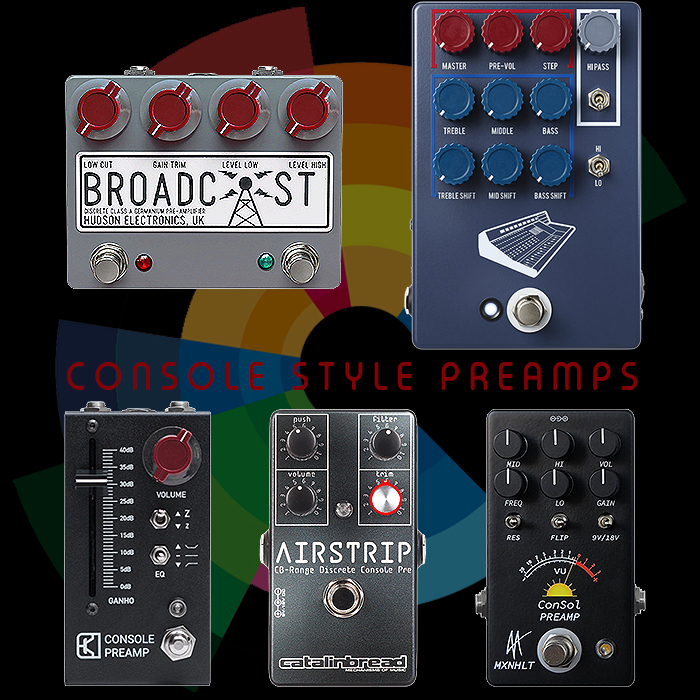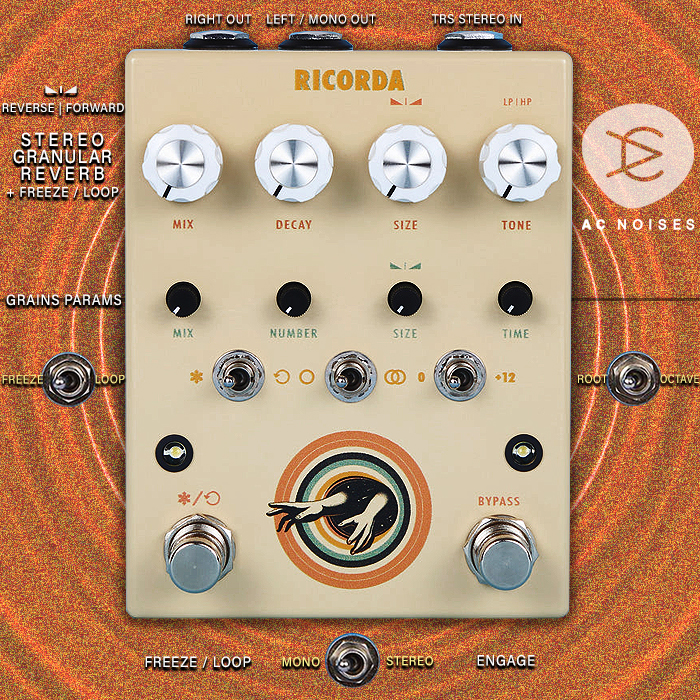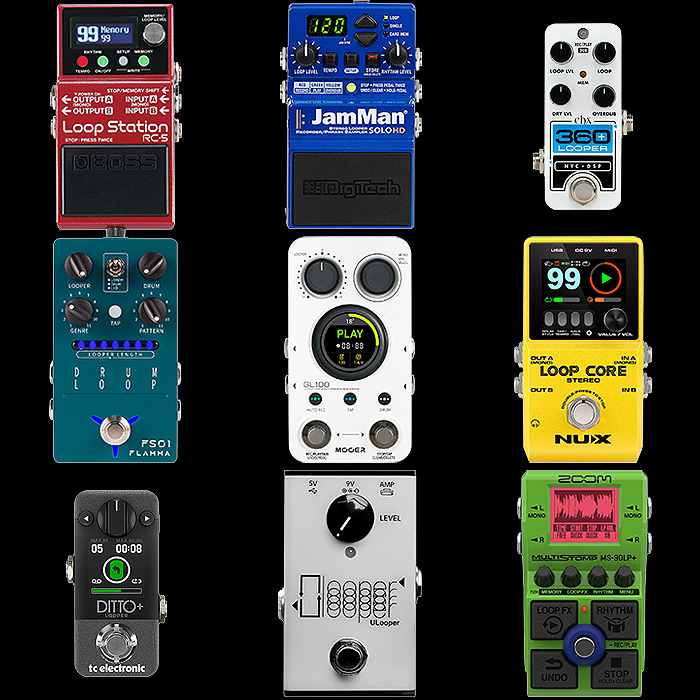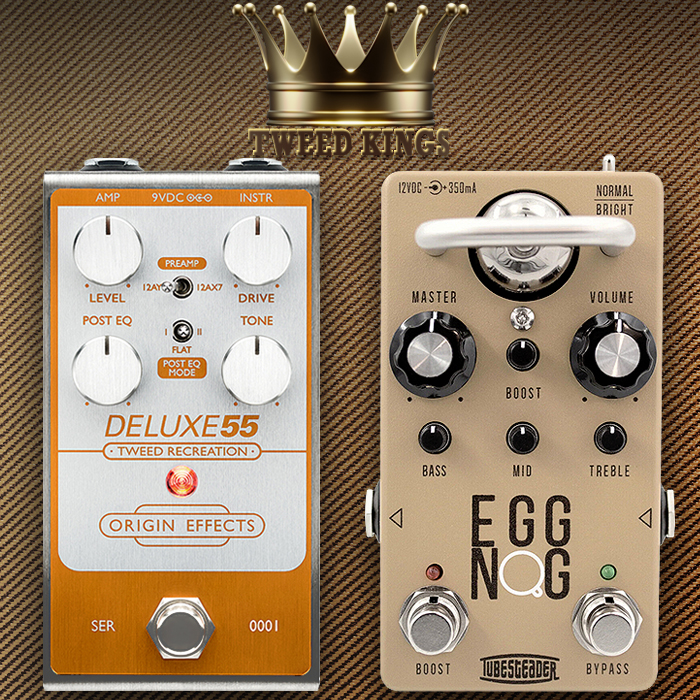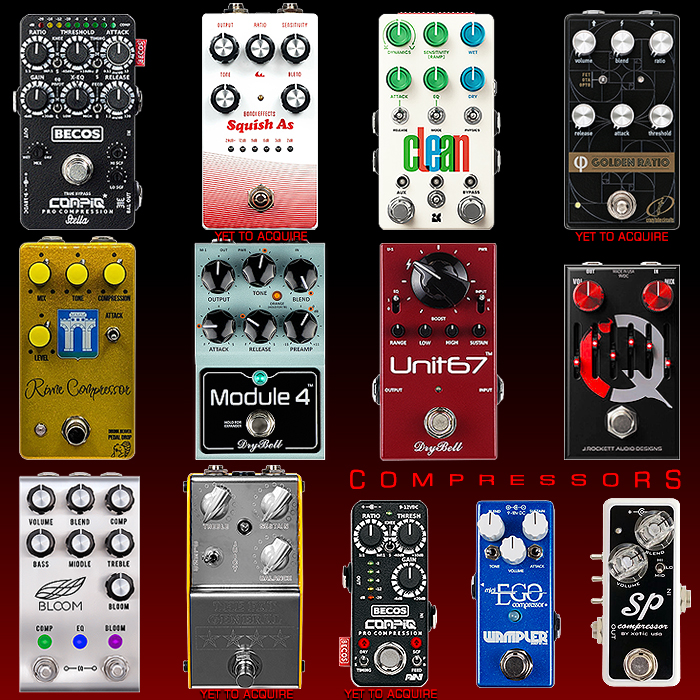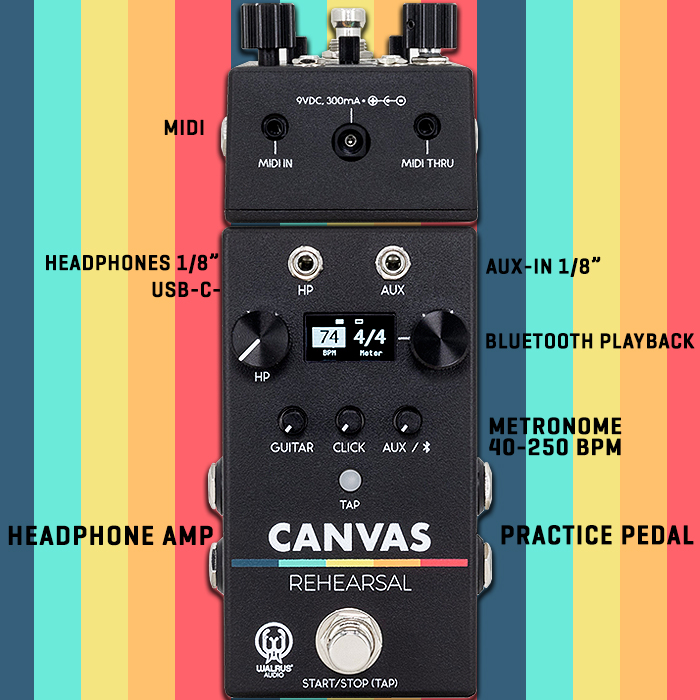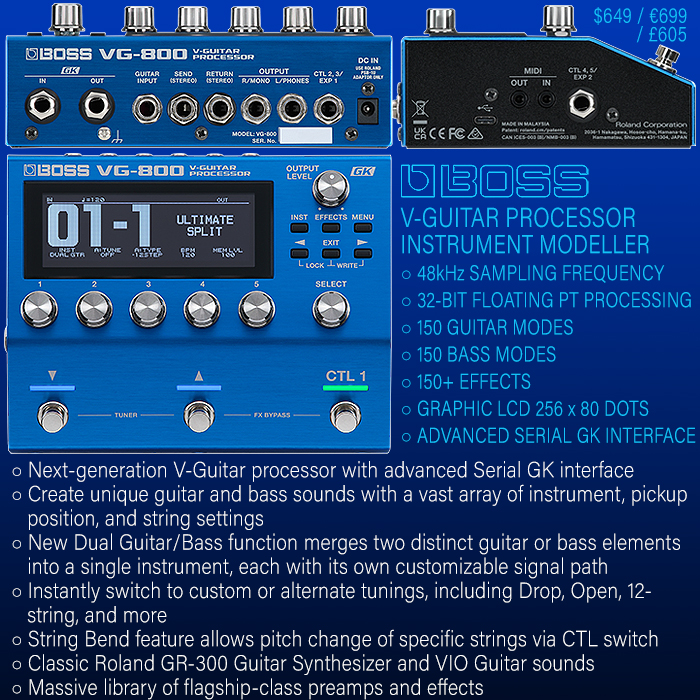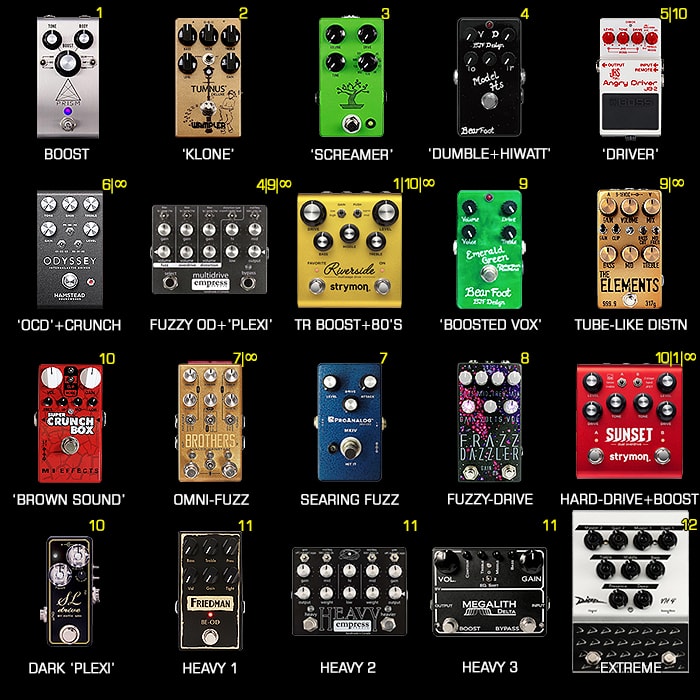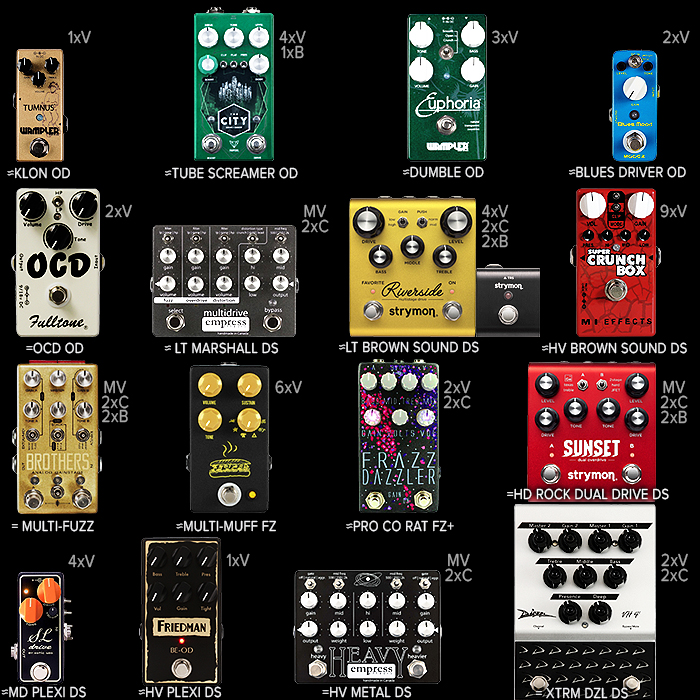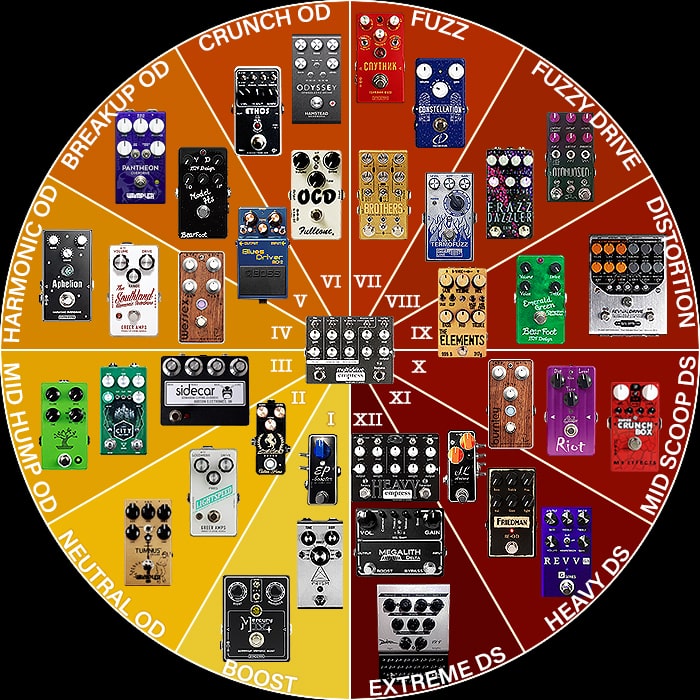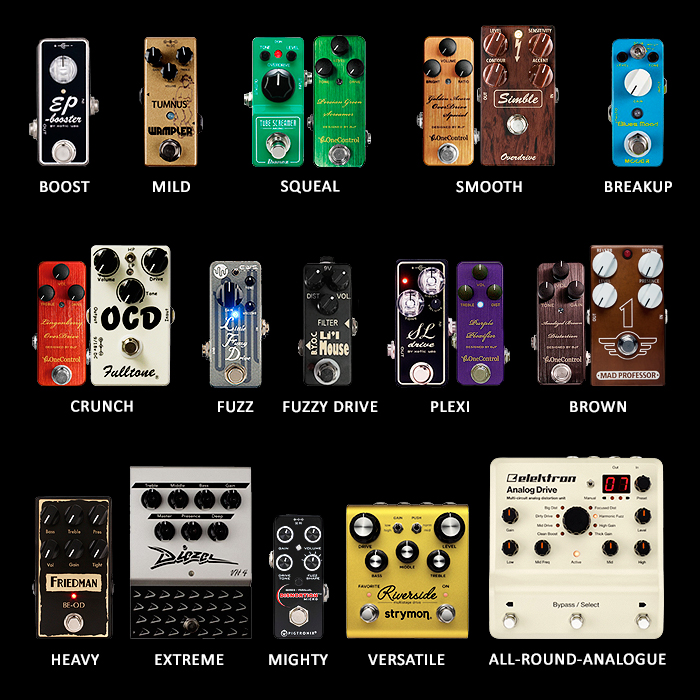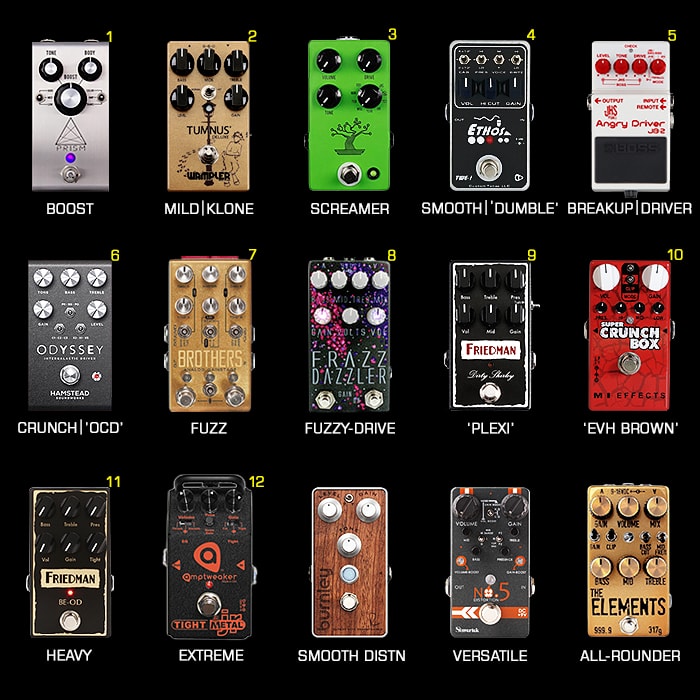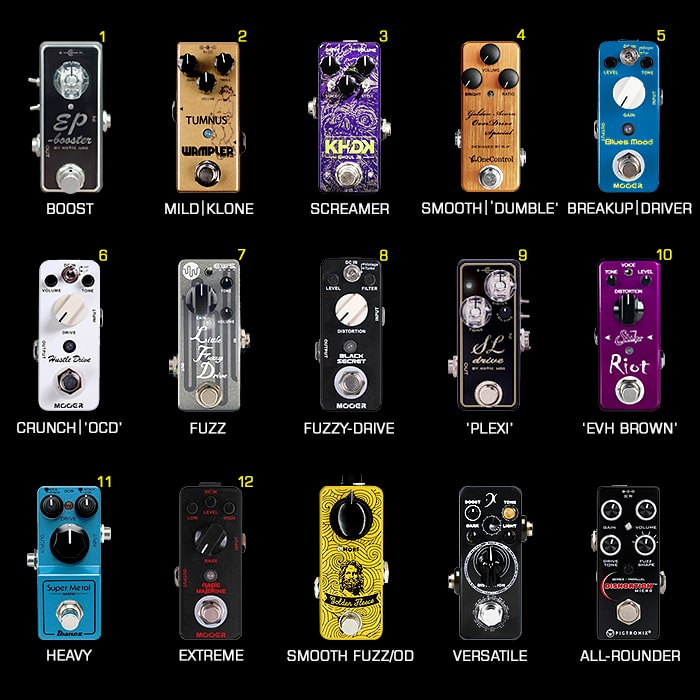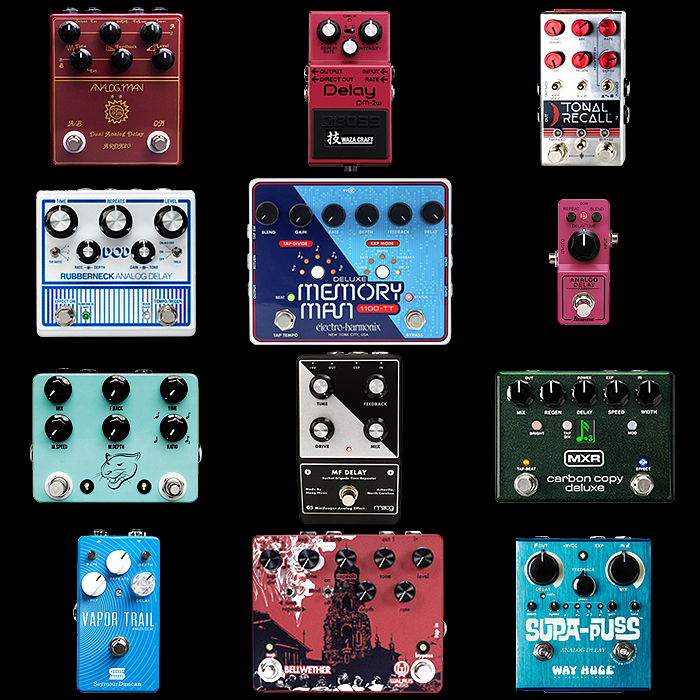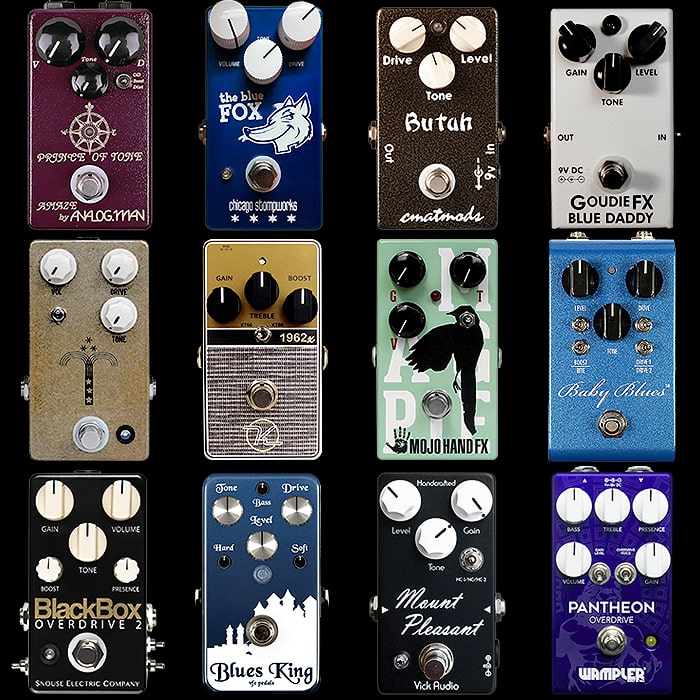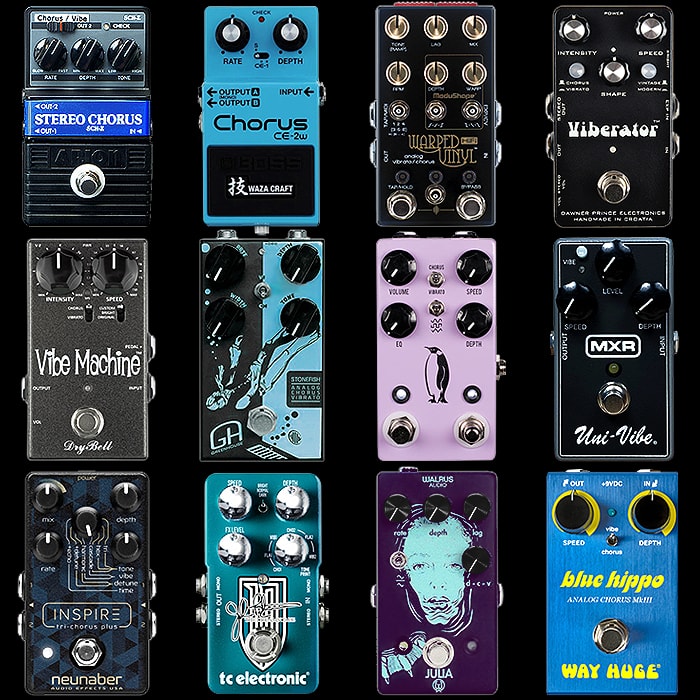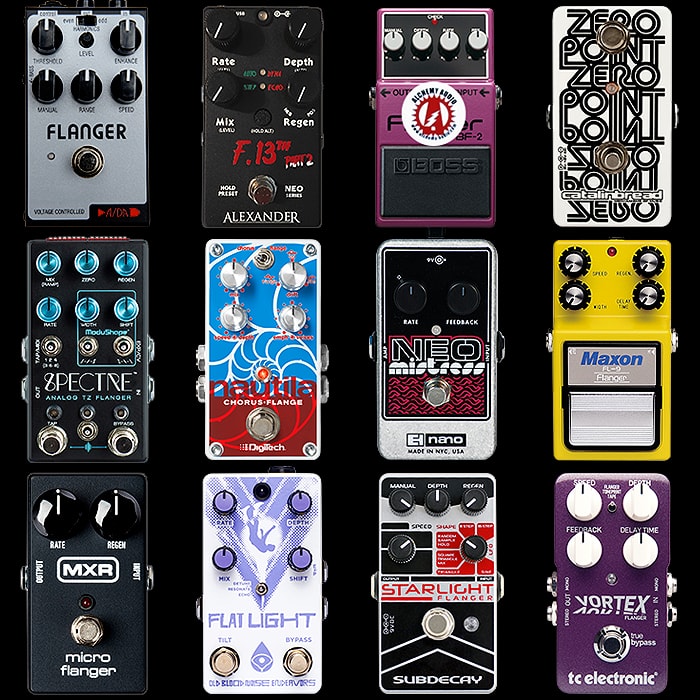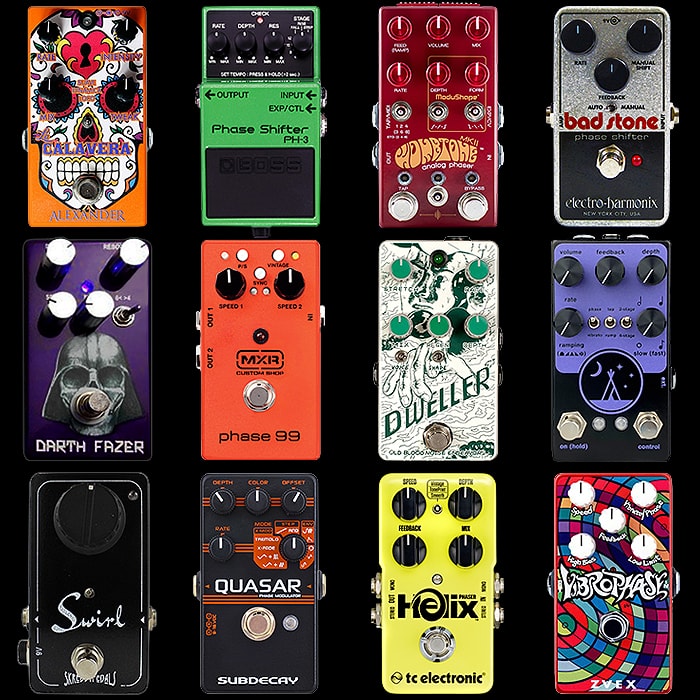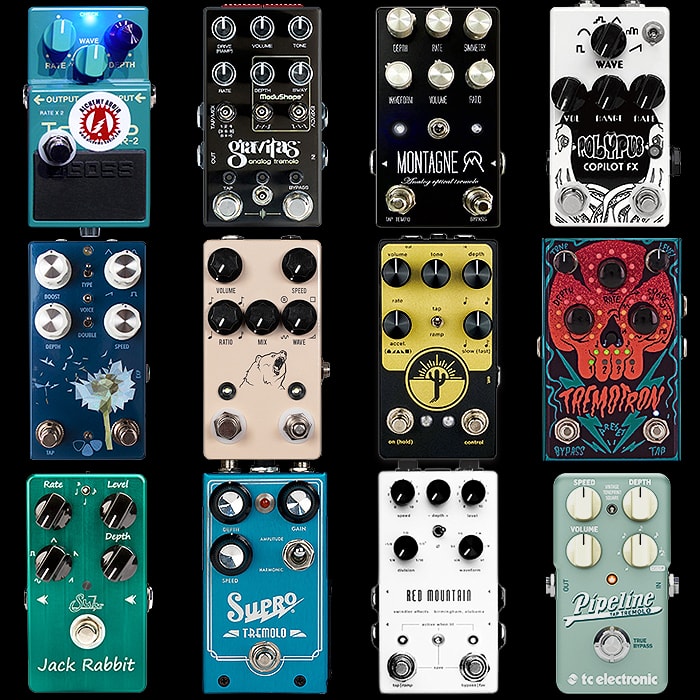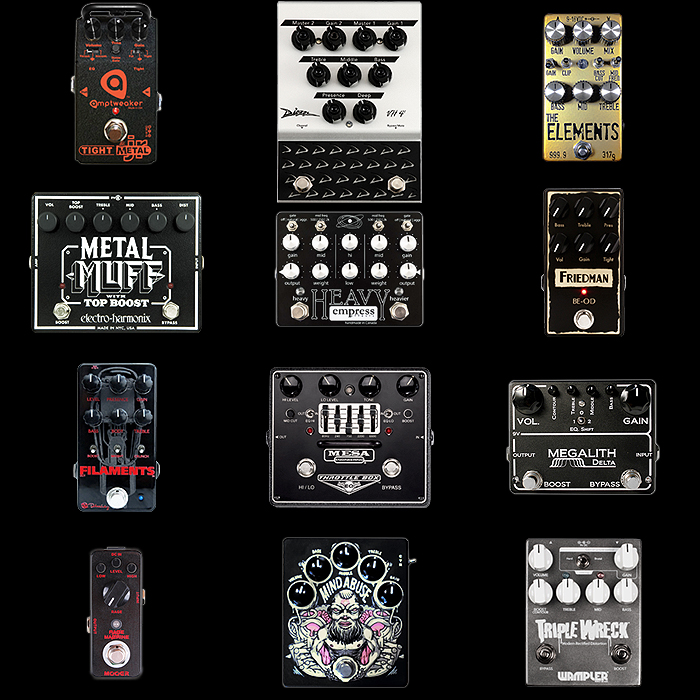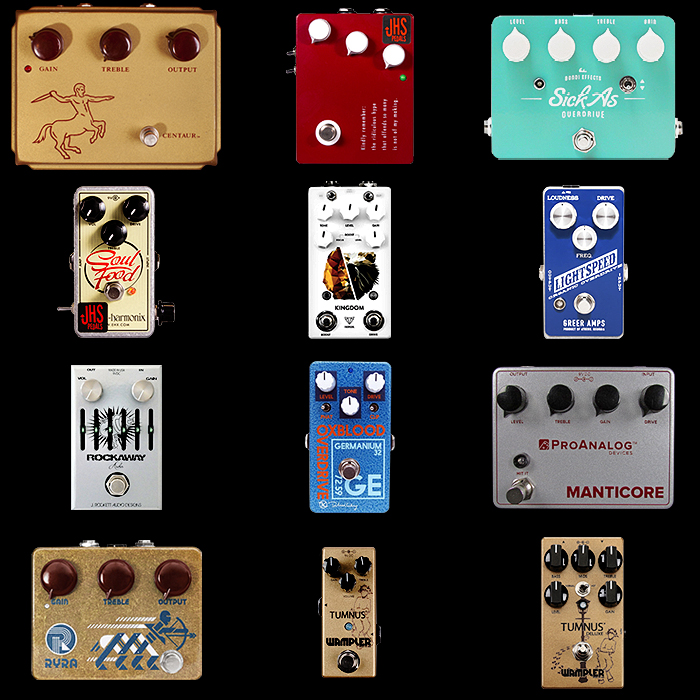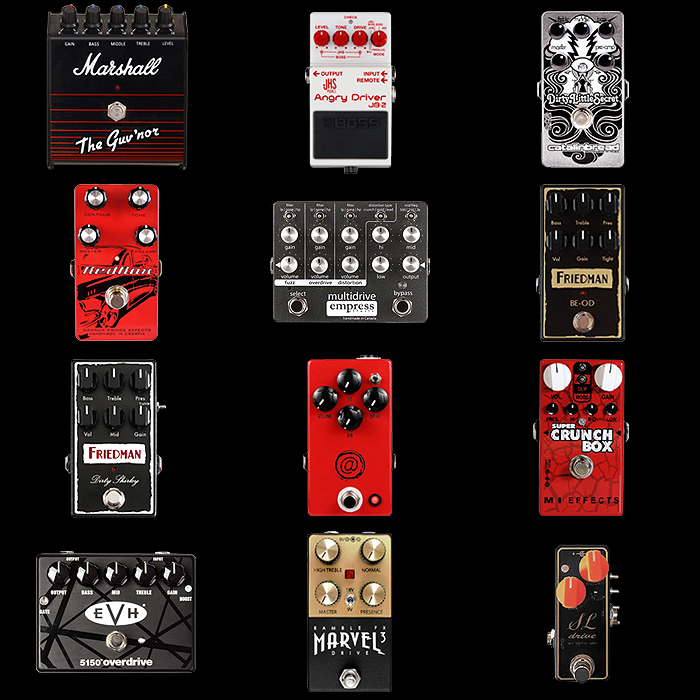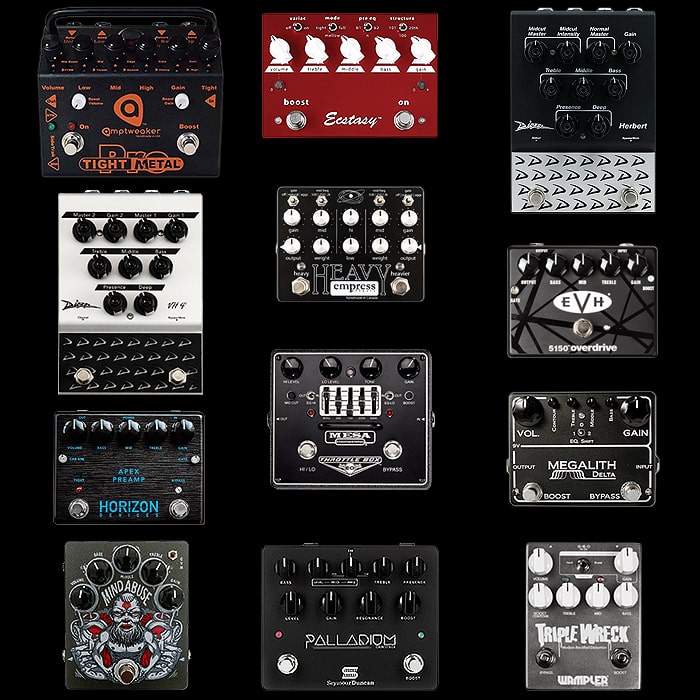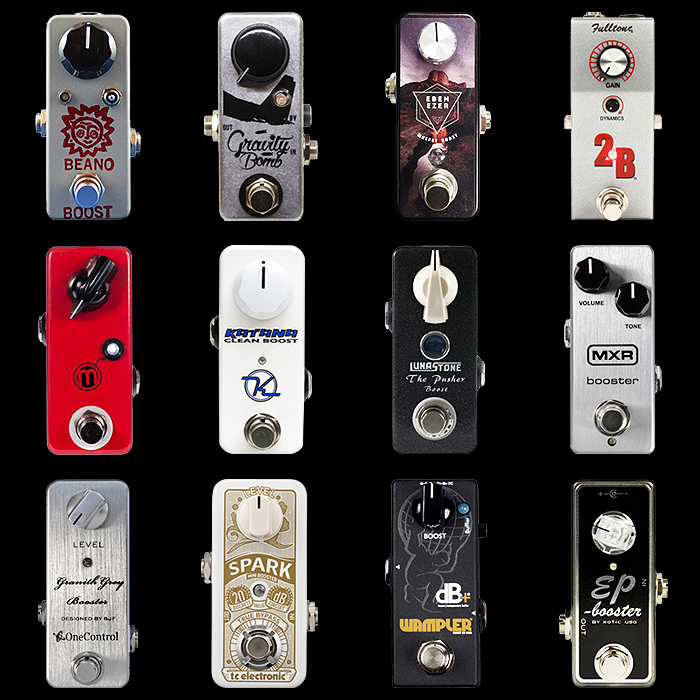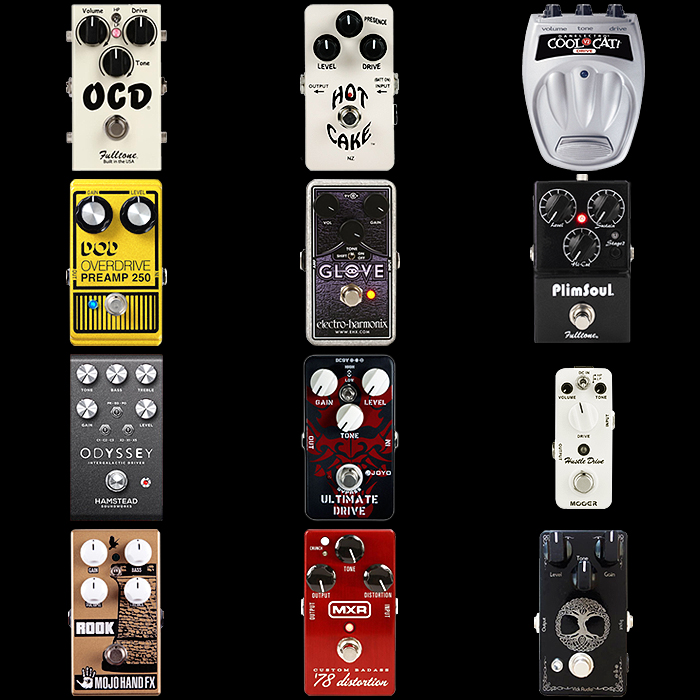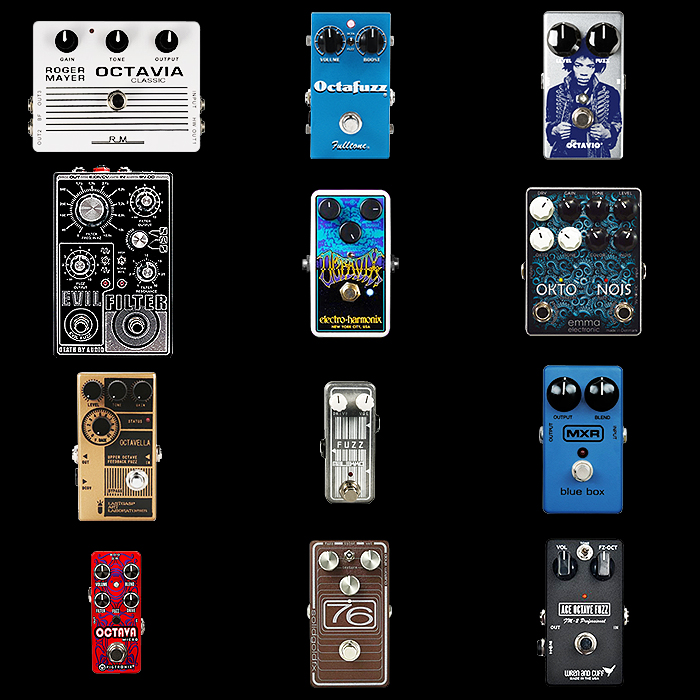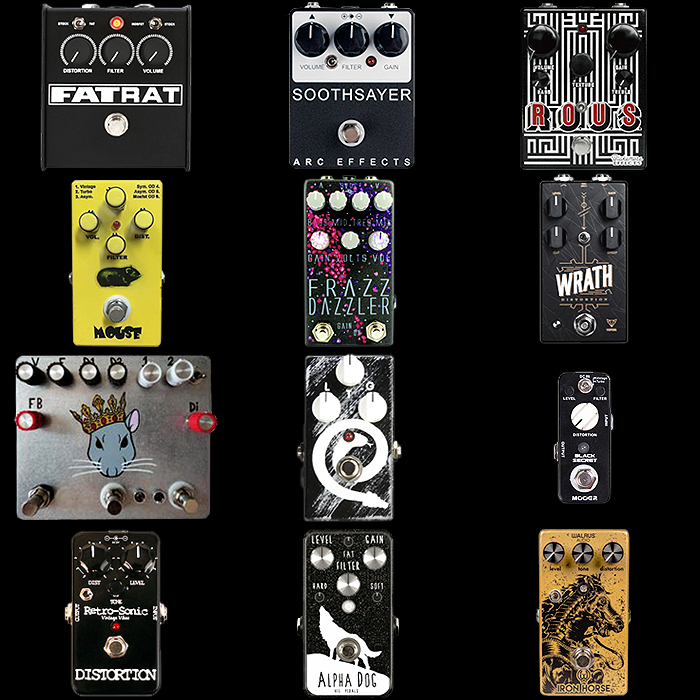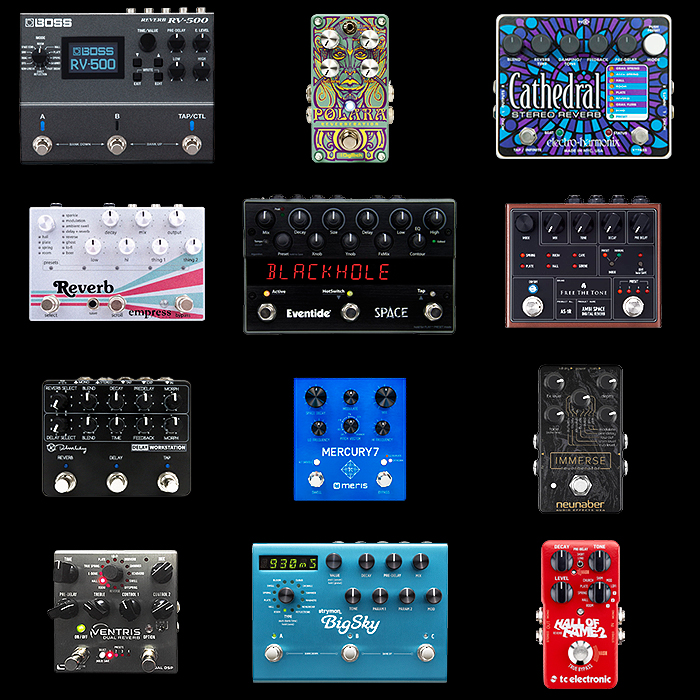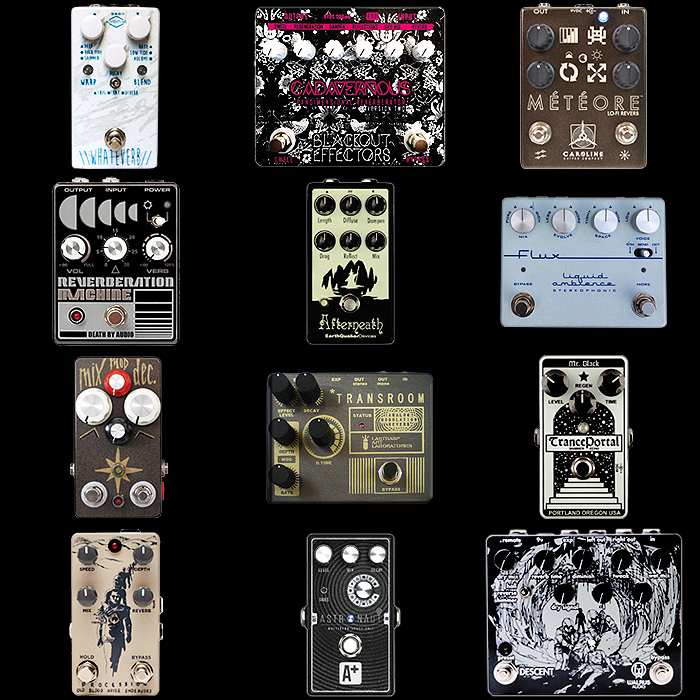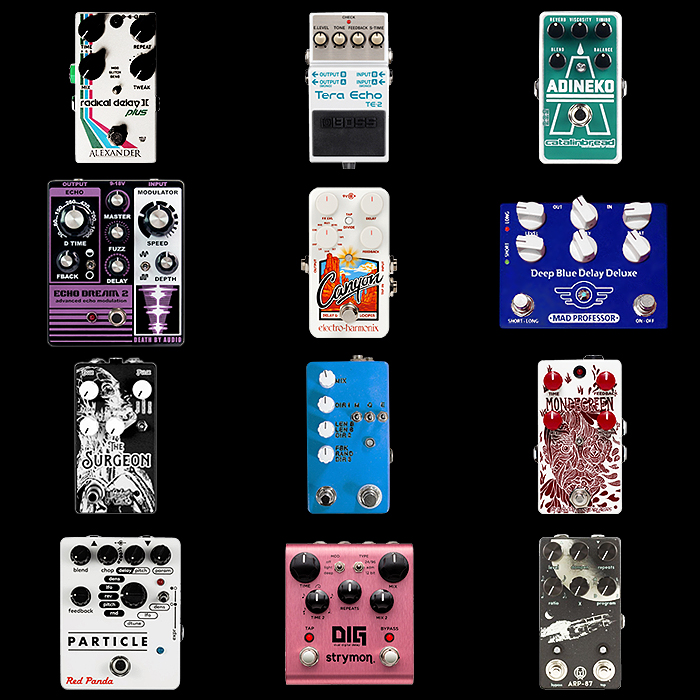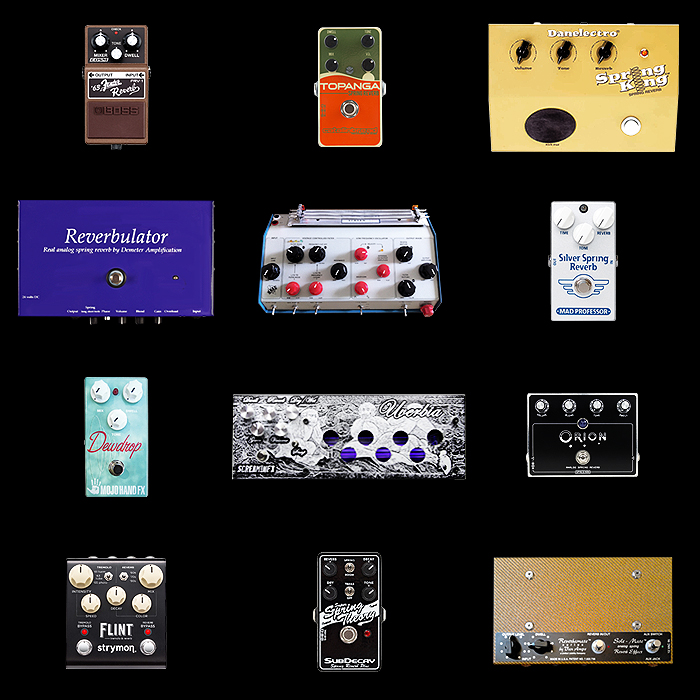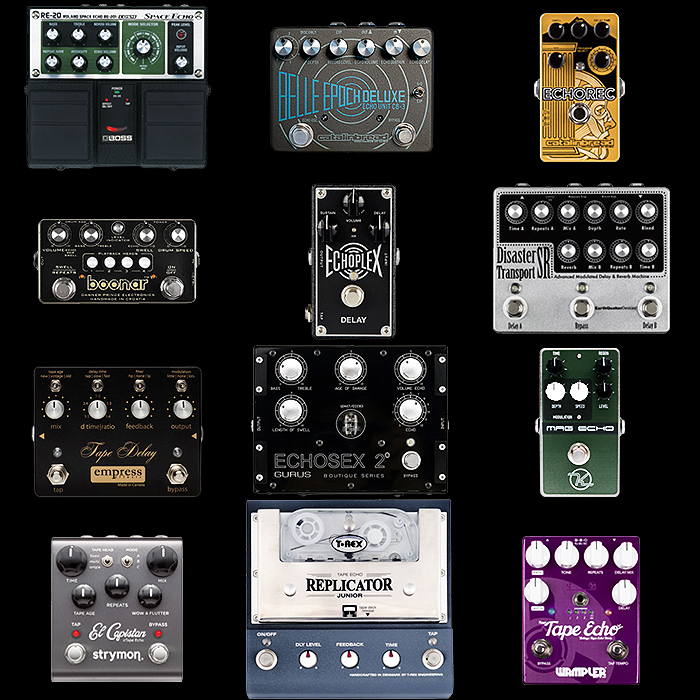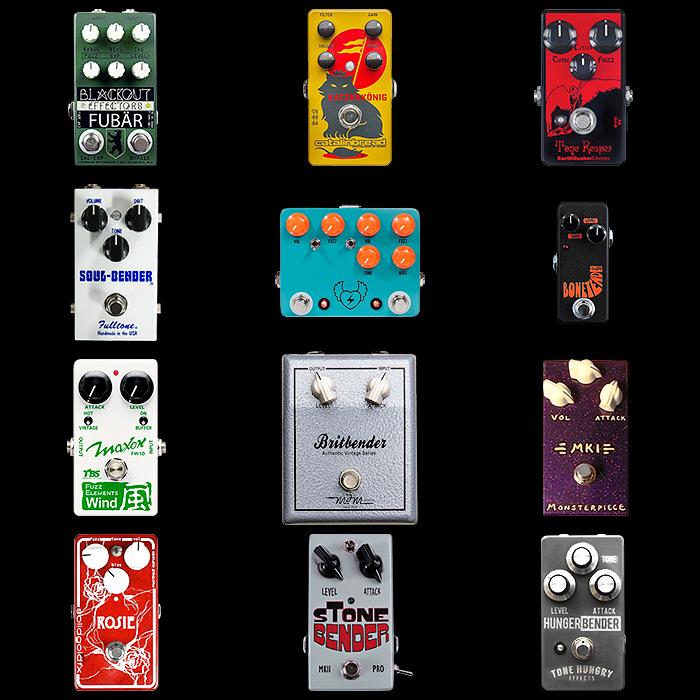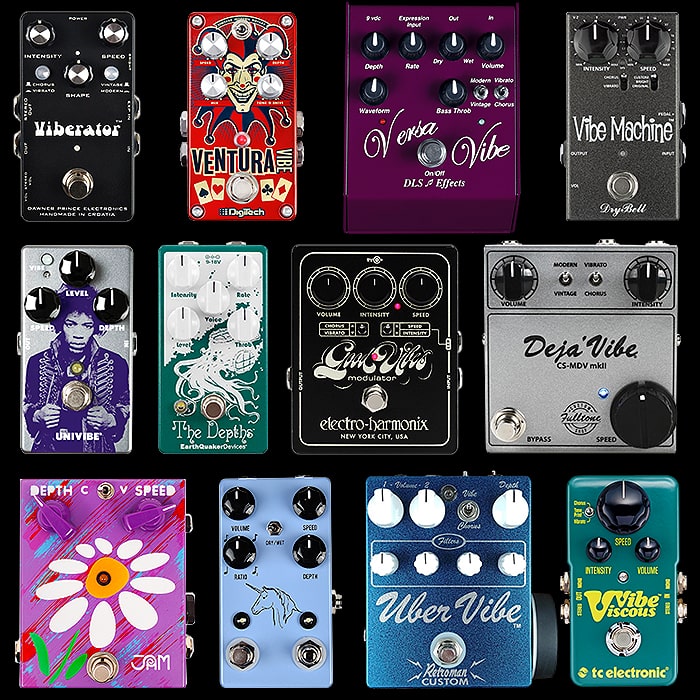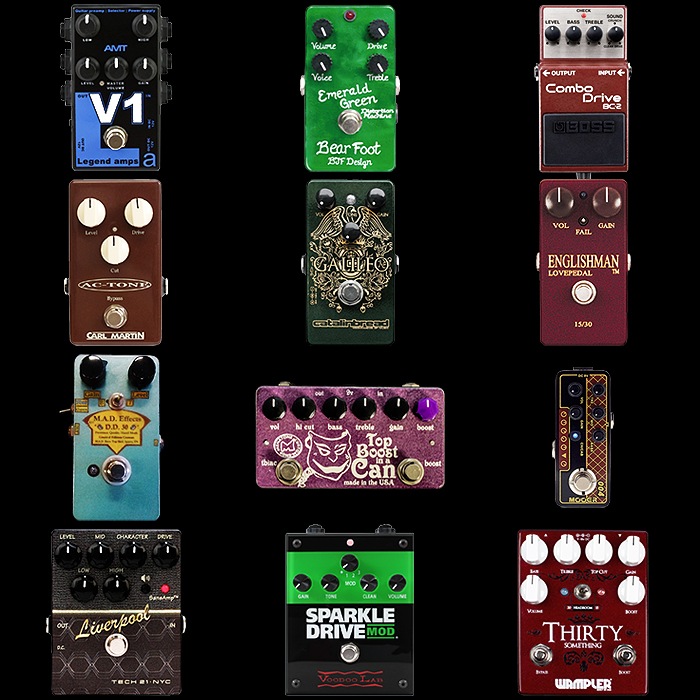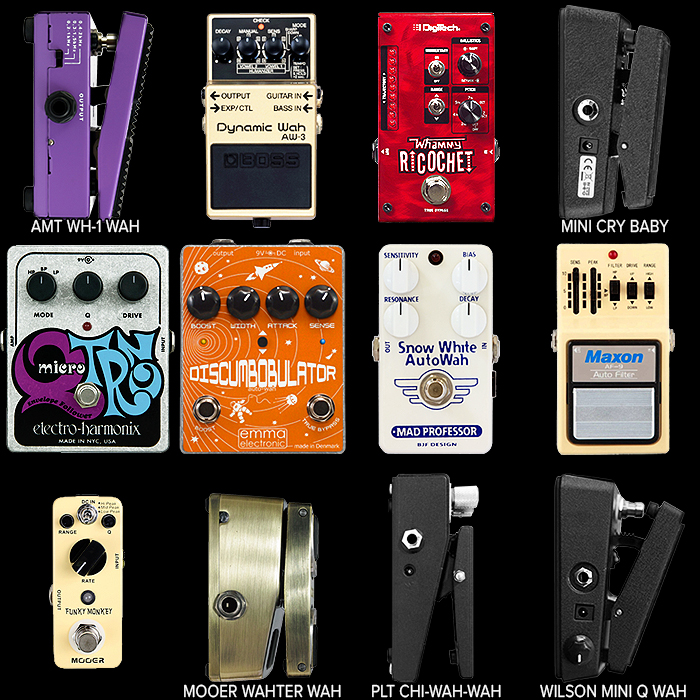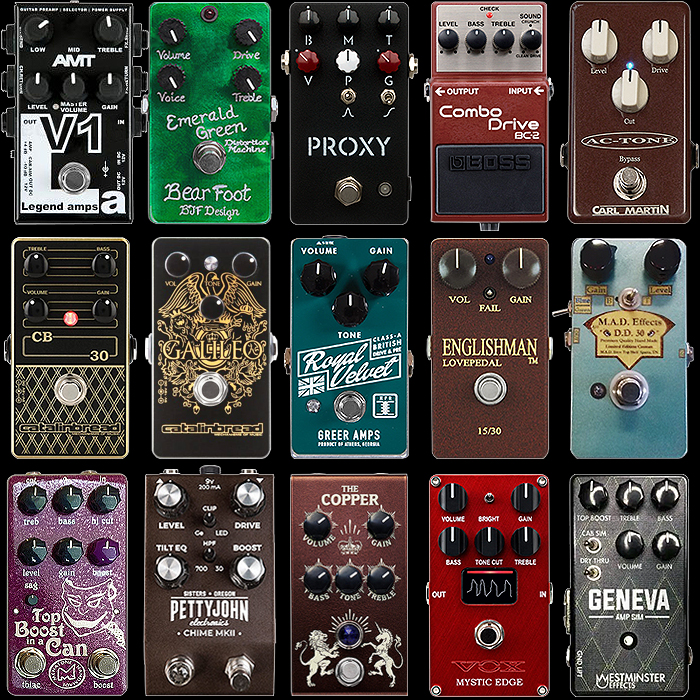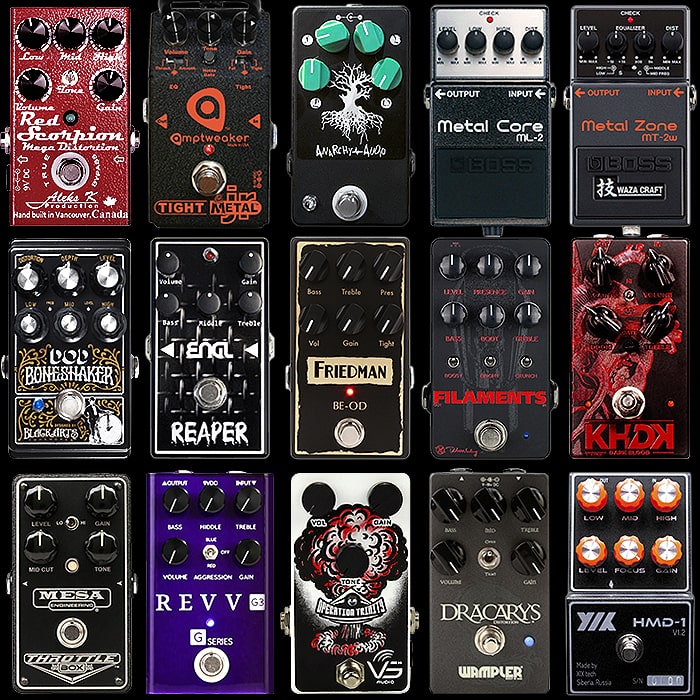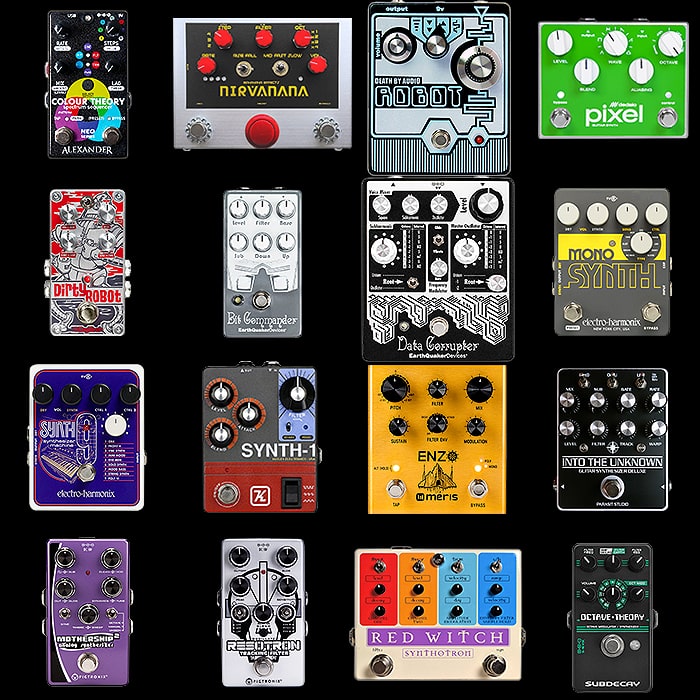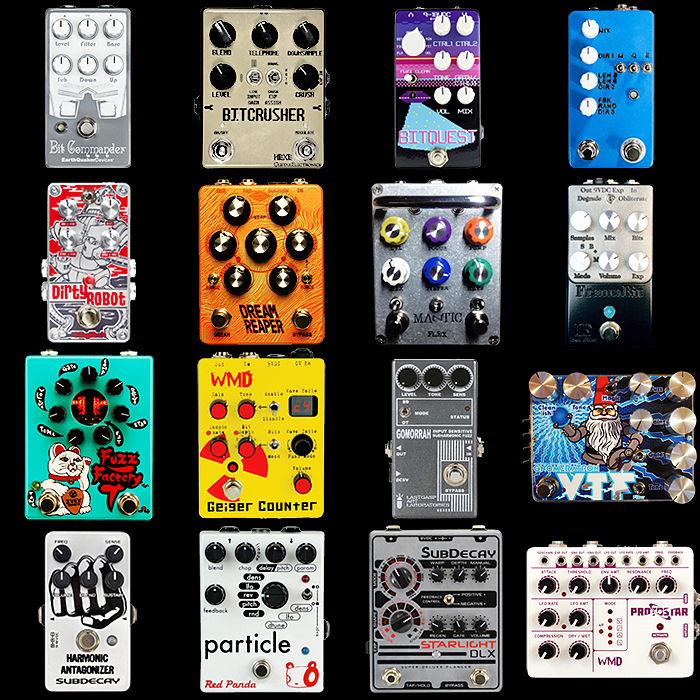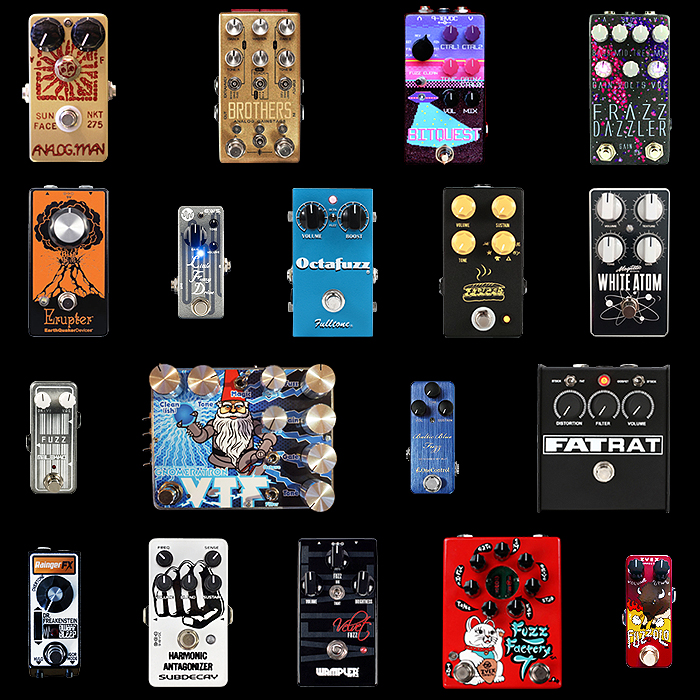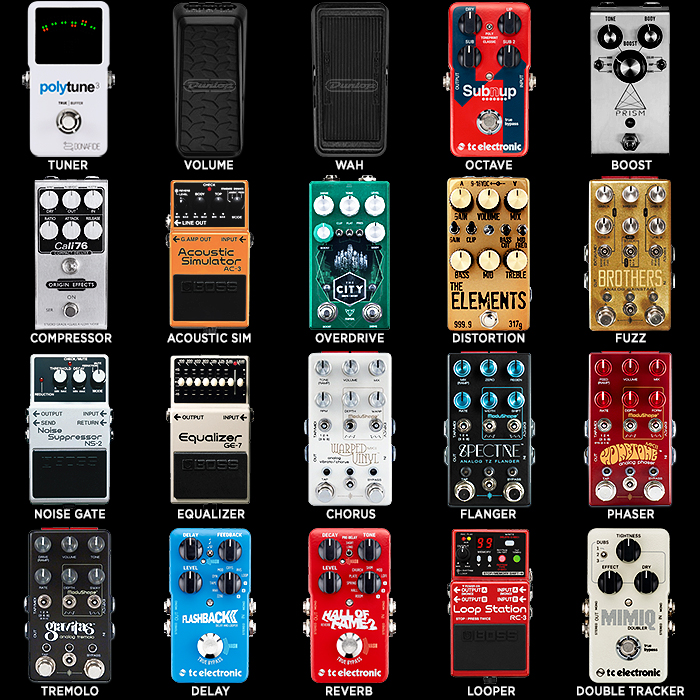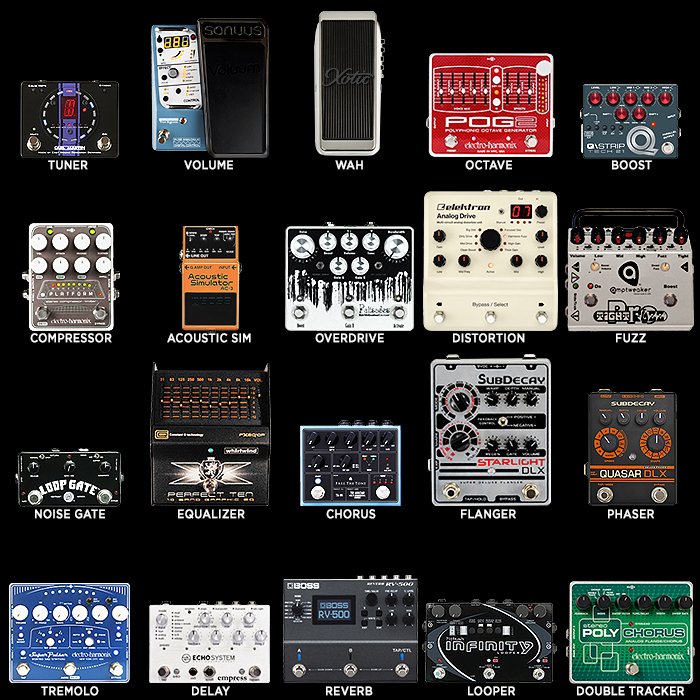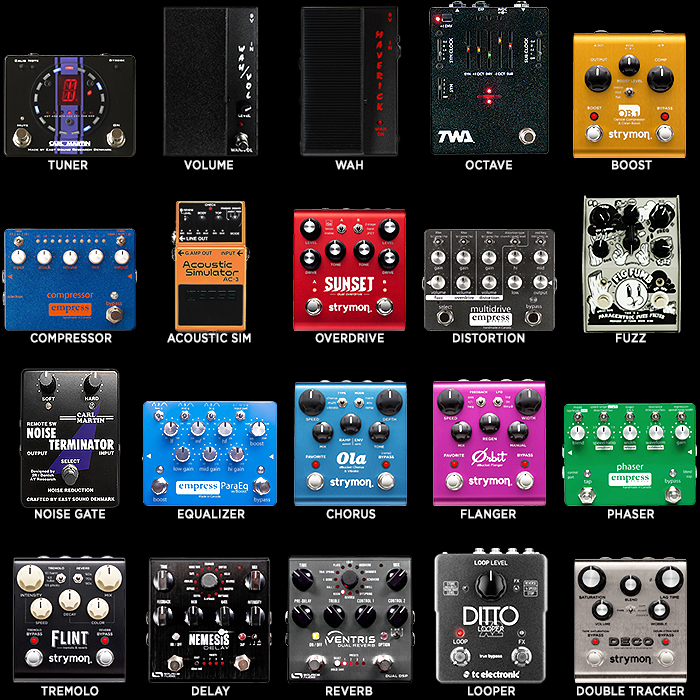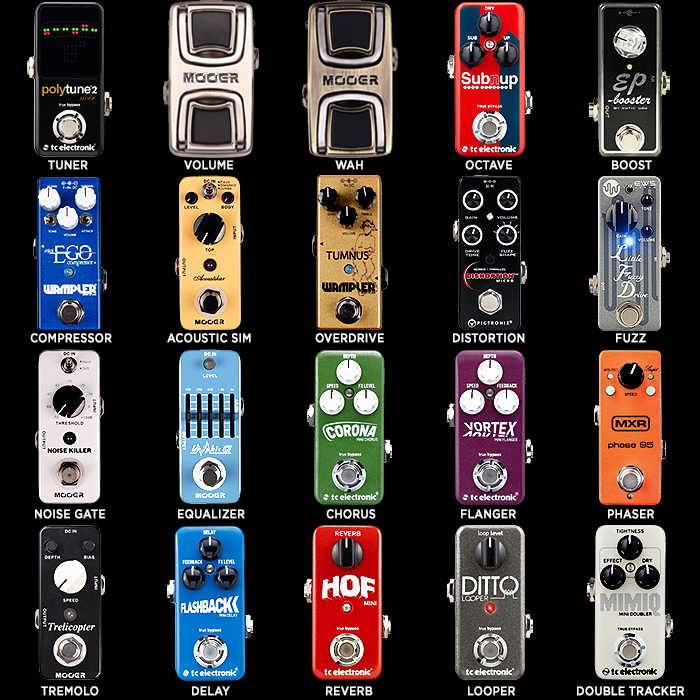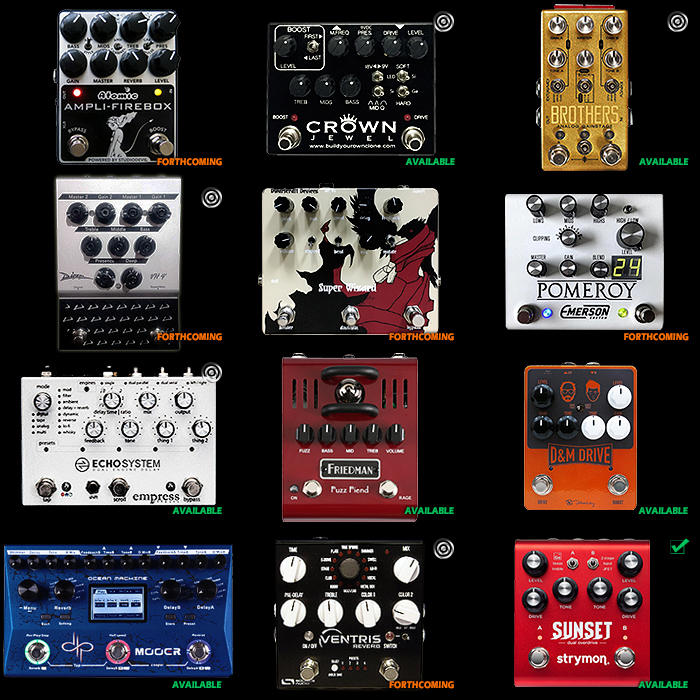More Pedal Chain Delight - The Spice Rack Analogy
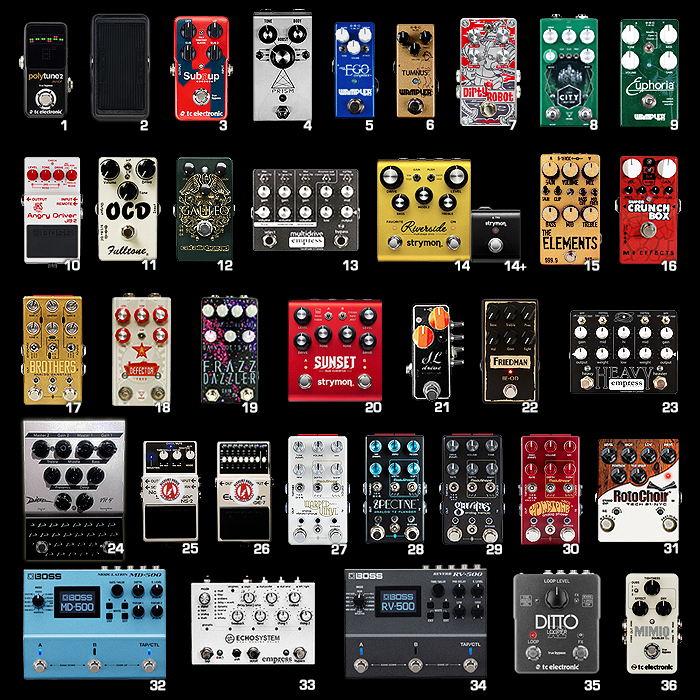
The last time I wrote about my ’home studio’ pedal chain (February) there were a mere 25 pedals / slots in my signal chain, which I thought was about the right number at the time! I next built up and settled on 35 slots being more representative of what I needed for my purposes, before I decided that I had to add a Vox + Top Boost / Brian May -style flavour too - courtesy of the Catalinbread Galileo (slot 12). So I’ve ended up with my current arrangement of 36 pedals / slots - which already presents significant operational challenges.
Yes my chain can be viewed as slightly excessively long and numerous, but there is a method to my madness as such. I have exceedingly broad and eclectic tastes in music, and like to be able to reproduce or at least closely assimilate anything I hear that I like. Moreover I like the ability to be able to experiment and be able to create new flavours and textures which evolve out of my imagination.
Within this context I see the obvious analogy being a spice rack or a whole load of pots with ingredients for a stir-fry. If you want to achieve a wide palette, you also need a broad range of ingredients that you can combine to build up those flavours and textures. And despite what you may read or imagine, all pedals are most definitely not created equal - even though some roughly approximate others - there are a select few that have extraordinary unique distinctions of texture and timbre - much like rare and delicate Italian woodland truffles. There are often 100’s of say Tube-Screamer-Alike pedals, but only one that fully matches the sound you have in your head. To many people, the detail and distinction will be lost, but that will be the same degree as an experienced sommelier or food taster versus a layman - they have heightened senses which can uniquely process those textures and flavours - down to the tiniest detail. And us musos amateur and pro - can be equally detailed and delicate in our tonal choices. There is really no right or wrong here - in the same way as you will all likely have your very own specific choices for favourite food and wine.
So there is a basic core component of ’Tone’ or specific distinct flavours here, but there are two other key factors that I’m rather keen on too, and these are versatility and practicality. Those latter 2 parameters can be rather nebulous and difficult to pin down for each choice - but they certainly include ’tweakability’, number of voices / channels, degree of control and form factor. Form factor is a mix of shape, size, button and dial arrangement, access to secondary features and function, positions of sockets etc. All of these can matter, but they all tend to matter to very slightly different degrees for each pedal choice.
I tend not to get rid of pedals so much, as I’ve gone through quite a significant process to acquire each and every one, and even though I can replace one with what I perceive to be an improvement, I may or may not return to its predecessor for a variety of reasons, or else settle for another swap-out.
For a large number of these slots - I have several different pedal options which give me different applications within a specific category - these categories are usually within distinct types, but can vary in breadth of application and there are of course various exceptions.
My pedal chain is a mix of analogue and digital - each provides a distinct and different character, and I’ve learned to appreciate the qualities of each and use them in combination. As this is quite a long signal chain the power supply and wiring dynamics are essential. You can read my related articles on clean power (isolated power supply) and high quality patch cables. It is essential to use the very best of those two, otherwise you will end up with lots of unwanted noise and weird artefacts within your output signal. Another requirement really is to have a buffer within the chain to ensure adequate signal strength throughout its length.
What also started off rather serendipitously has become an essential too - and that is the presence of boost abilities and EQs throughout the length of the chain - to be able to tweak, sculpt and balance your tonal output along the way. As such there are 5 pedals which have primary or seconday EQ function in the chain - these include the Jackson Audio Prism (4), Strymon Riverside (14), Dr Scientist Elements (15), Chase Bliss Brothers (17), and of course the main Boss GE-7 EQ at slot 26 - I also occasionaly use the CryBaby Q-Zone in the Wah slot (2) - and this gives me a different sort of EQ too.
Then there are no less than 9 ’boost’ pedals throughout the chain - the main Jackson Audio Prism (4) is permanently on, the Tumnus (6) and City (8) are also used as boosts downstream, and we have dedicated boost functions throughout the chain on various pedals - the City (8) has separate boost, as does the Riverside (14 and 14+), the Brothers (17), Defector (18), and Sunset (20). So the combination of additional EQs and Boost gives me enormous utility both upstream and downstream along the chain - meaning I have several instance where I can apply both pre- and post- gain boosts.
So the ideal number of slots for my needs certainly would seem to be 36, and there are numerous slots here where I switch out pedals quite frequently for different purposes. Here follow some specific details as to why and how each pedal / slot pertains to the chain:
01 : TUNER : TC Electronic PolyTune Mini Noir - £74
I love my TC Electronic Tuner, the newest larger format has an additional buffer option, which I could probably benefit from, but is not essential - so I will pretty much certainly stick with this form factor and this particular pedal maker. As an alternative I've considered the Sonic Research ST-300 Mini, but that one is not PolyTonic - meaning you can't get a quick overview of all the string's tuning in a single strum. It is likely more accurate, but I prefer the convenience and speed of the PolyTune - it works really well for me.
- Existing swap-outs : None
- Wishlist + Alternatives : Sonic Research ST-300 Mini - £139
02 : WAH / ENVELOPE FILTER : Dunlop CryBaby Mini Wah - £118
As I've explained in a number of my pedal category posts - the Wah is an Envelope Filter -type effect and there are numerous different variations within this family - Wah, Fixed Wah, Auto-Wah and more broad-ranging Envelope Filters like the Sundecay Prometheus DLX. There's also related but distinct flavours like the recent DigiTech FreqOut which I've been intending to get for the longest time but never really got around to. I frequently swap around my CryBaby Mini Wah and CryBaby Fixed Wah, and have plans to add the FreQout, as well as one more versatile auto-sweeping envelope filter at some stage - possible the Snow White or Prometheus DLX. there are also relevant options from Boss and Maxon here - which drop in and out of my wishlist hierarchy.
- Existing swap-outs : DigiTech Whammy Ricochet - £123 | Dunlop CSP030 CryBaby Q-Zone Fixed Wah - £123
- Wishlist + Alternatives : Analog.Man Envelope Filter - $219 | DigiTech FreqOut - £149 | Emma Electronic DiscumBOBulator - £155 | Mad Professor Snow White AutoWah - £175 | Subdecay Prometheus DLX - £249 | Wilson Effects Mini Q-Wah - $225
03 : OCTAVER / HARMONIZER / PITCH SHIFTER : TC Electronic Sub 'N' Up - £109
For a long time I was considering getting a proper Octave Fuzz pedal, but thought it more practical to have separate pedals for each effect and I could then combine them more cleverly. I tend to drop in and out of Jimi Hendrix phases, so the Octaver sometimes sits unused for a while, and is occasionally front and centre of extended periods. I've decided that I'm definitely getting the new TCE Quintessence - with its 3 TonePrint presets and MASH footswitch; I've also had my eye on a DigiTech Drop and EHX Pitchfork for quite a while.
- Existing swap-outs : None
- Wishlist + Alternatives : DigiTech The Drop - £99 | Electro-Harmonix Pitchfork - £149 | TC Electronic Quintessence Harmonizer - £145
04 : BOOST : Jackson Audio Prism Boost / Buffer / Pre-Amp / EQ - £259
I was actually very happy with my diminutive Xotic EP Booster Alchemy Mod for the longest time, and even did a piece on how mini boos pedals was where it was at. But that was before I came across the Jackson Audio Prism - which combines Boost with Buffer, EQ and Overdrive / Pre-Amp. It's such a versatile tool - it's an incredible pedal really, and easily the best boost that I am aware of currently available - it's only weakness is that it has no fine control over the mid frequencies - would have been nice to have a contour dial or similar for that - possibly we will see that in a V2 sometime. You can read my article about how many amazing mini boosts are available, in the regular pedal format - and apart from the Prism, I really like the sound of the recent Friedman Buxom Boost and the ridiculously priced Vemuram Budi Boost. For now though I love the Prism and would not swap it for anything, although I would like the addition of mid-frequency control at some stage.
- Existing swap-outs : TC Electronic Spark Mini Booster - £40 | Xotic EP Booster Alchemy Mod - £142
- Wishlist + Alternatives : Friedman Buxom Boost £199 | Vemuram Budi Boost £375
05 : COMPRESSOR : Wampler Mini Ego - £179
Much like the boosters, I have a penchant for mini compressors too, and the Wampler Mini Ego does an excellent job. I would not really want to sacrifice the real estate for the larger pro compressor pedals - say from Empress or Keeley, but I would happily consider the 6-pot Origin Effects Cali76 Compact Deluxe which is pretty much the pro-players' compressor of choice. I'm not sure I totally need it, and if a decent drive pedal comes along - I will typically always prioritise that over a marginally improved utility pedal - but if and when I swap, it would most definitely be for the Cali76 (which is pricey). I also have my eye on the mini Pigtronix compressor which is of the optical type.
- Existing swap-outs : Xotic SP Compressor Alchemy Mod - £163
- Wishlist + Alternatives : Keeley Compressor Plus - £129 | Origin Effects Cali76 Compact Deluxe - £279 | Pigtronix Philosopher's Tone Micro - £128
06 : KLON CENTAUR-STYLE OD : Wampler Tumnus - £179
There are lots who swear by the original and now pretty rare 1990's Klon Centaur 'transparent' overdrive. Some prefer a Tim / Timmy OD, some a Soul Food or Hot Cake and my own preference is for Brian Wampler's Tumnus - which gives you a little more low end. The Tumnus is my most used and probably best loved overdrive and it's amazingly versatile - gets quite mid-rangy in the gain department and works excellently to boost other drive pedals. I had in mind to swap the Tumnus out for the new Steve Stevens signature J Rockett Rockaway Archer - which is essentially a Klon clone with a 6-band graphic EQ. Yet Wampler surprised us all with the introduction of a regular-size 'Deluxe' Tumnus which has a 3 band EQ, plus higher gain 'Hot' toggle switch - so I'll be getting that at some stage in the new year.
- Existing swap-outs : EHX Soul Food JHS Mod - £105 | TC Electronic MojoMojo - £42
- Wishlist + Alternatives : Foxpedal Kingdom Combo V2 - £225 | J Rockett Rockaway Archer - £249 | Side Effects Il Mostro - €100 | Wampler Tumnus Deluxe - £199
07 : SYNTH / SEQUENCER / BITCRUSHER : DigiTech Dirty Robot - £115
So this is in effect a companion to slot '3' - which does its own sort of frequency manipulation. This slot for the longest time had the 8-effect Dr Scientist BitQuest, which also doubles as a formidable Fuzz pedal. Yet the DigiTech Dirty Robot is currently occupying this slot, and I am likely to acquire the amazing Pigtronix Mothership 2 in the new year to take up the prime position. I also have my eye on the Syntax Error, Data Corrupter and FrantaBit Bitcrusher - all amazing pedals in their own right. The reason these pedals occupy this slot is that I can upstream and downstream this pedal - by adding and boosting the Prism and Tumnus in advance, or the various other drives being pushed by the effected signal - so it gives me more variety in application.
- Existing swap-outs : Dr Scientist BitQuest - £229
- Wishlist + Alternatives : Alexander Pedals Syntax Error - £199 | EQD Bit Commander - £195 | EQD Data Corrupter - £225 | Iron Ether FrantaBit - $235 | Malekko Scrutator BitCrusher - £179 | Pigtronix Mothership 2 Synth - £249 | Subdecay OctaSynth - £134
08 : TUBE-SCREAMER-STYLE OD : Foxpedal The City V2 - £229
I have a sad feeling that Todd Billow's Foxpedals may have gone under - which is a crying shame really as he has made some excellent pedals and had several more on the way. I own 3 of his, and had several more on my wishlist. In any case 'The City' is my current favourite Tube-Screamer-Alike - with amazing versatility via 3 tone-tweaking toggles and a dedicated boost footswitch. To go one better than this you would need to aim for the massive EQD Palisades which is the ultimate Tube-Screamer-Alike but with an equally gigantic footprint. For compact pedals I cannot find a better example than this - although the original Ibanez TS808 and Nobles ODR-1 provide excellent alternatives too.
- Existing swap-outs : Ibanez Tube Screamer Mini - £55 | Keeley Red Dirt Mini - £99 | OneControl Persian Green Screamer - £129 | OneControl Strawberry Red OD - £129
- Wishlist + Alternatives : Ibanez TS808 | Nobels ODR-1 Natural Overdrive - £85
09 : DUMBLE ODS-STYLE OD : Wampler Euphoria - £189
The original pedal here was the Mad Professor Simble which I still love, while the Mad Professor Golden Cello previously occupied a different slot in the chain. I switched to the Wampler Euphoria for its greater versatility via its 3-way voicing toggle. Be aware that it took my a lot longer to dial in my preferred tone, but I now have various preferred settings options across those dials which I like, while for the Simble I really just used it in one position. I've also got my eye on the Mojo Hand FX Extra Special Overdrive and the OneControl Golden Acorn - but neither of those can provide quite the same versatility as the Euphoria. For me the Dumble style overdrive is a very smooth sounding medium drive with a very subtle hint of fuzz on the edges. It's quite a distinct tone, but in and of itself only one of the core tone types that the Dumble ODS amps delivered.
- Existing swap-outs : Mad Professor Golden Cello - £165 | Mad Professor Simble - £149
- Wishlist + Alternatives : J Rockett The Dude - £199 | Mojo Hand Fx Extra Special Overdrive - £179 | OneControl Golden Acorn ODS - £145 | Shin's Music Dumbloid Twin Channel Overdrive Pedal - £770
10 : BLUES DRIVER-STYLE OD : Boss JB-2 Angry Driver - £179
For the longest time the mini Mooer Blues Mood in Fat mode was my favourite regular use drive pedal. So I'm delighted that Boss and JHS combined to produce the dual Blues Driver + Angry Charlie pedal - it has phenomenal versatility and sounds great. I also use my main Boss EQ to boost the lower frequencies to replicate the Fat mode I was getting on the Mooer. I look forward to see what future mods Analog.Man, JHS and Keeley will do to this - as they all started out to a degree modifying Boss Blues Driver pedals! There are a number of alternatives I still have my eye on - the excellent Marshall Bluesbreaker inspired Prince of Tones, The Butler Tube Driver inspired Buffalo FX TD-X and the EQD Acapulco Gold and MI Audio Super Blues Pro - all brilliant in their own right. Yet I think the Angry Driver will probably remain a modern classic for a while, and is relatively safe in its slot.
- Existing swap-outs : EWS Little Brute Drive - £69 | Mooer Blues Mood - £57
- Wishlist + Alternatives : Analog.Man Prince of Tones - $138 | Buffalo FX TD-X - £199 | EQD Acapulco Gold - £135 | MI Audio Super Blues Pro - £138
11 : OCD OD : Fulltone OCD - £149
This is another pretty distinct drive pedal which I initially used a lot more than the Blues Driver ones, but which is now somewhat playing a role of second fiddle. It is nonetheless very much its own thing, and I very much still enjoy using it. I would also like to check out the Fulltone Plimsoul too at some stage which has quite a different character, but which I would swap out at least temporarily in this slot.
- Existing swap-outs : Mooer Hustle Drive - £37
- Wishlist + Alternatives : Fulltone Plimsoul - £149
12 : VOX AC30 + TREBLE BOOSTER -STYLE DISTORTION (Brian May / The Edge) : Catalinbread Galileo £129
This one is actually the latest addition to the chain as such and gives you that superb treble-boosted Vox AC30 saturation that Brian May is so well known for, This pedal's acquisition really illustrates how complex the pedal marketplace has become - as I considered 8 different pedals for this role - the Boss BC-2, Carl Martin AC-Tone, Catalinbread Galileo, Lovepedal Englishman, Menatone Top Boost in a Can, Mooer Micro PreAmp 004, Tech 21 NYC SamsAmp Liverpool and Wampler Thirty Something! Based on all the different criteria I arrived at Catalinbread as my preferred choice, and it indeed serves me well for my purposes. It does not really do the beatifully clear sparkly clean clean-up like Brian's setup accommodates, but it gives me what I need. There are plenty of options here depending on exactly what you are trying to acheive. I always knew Catalinbread did exceptional delay pedals, but I had not really looked to them as being particulalry capable with drive sounds, but based on my experience of the Galileo, I would also like to try out the Sabbra Cadabra (Black Sabbath's Tony Iammi) and the RAH (Royal Albert Hall Led Zeppelin Jimmy Page) pedals.
- Existing swap-outs : None
- Wishlist + Alternatives : Catalinbread Sabbra Cadabra - £137 | Catalinbread RAH - £153 | Wampler Thirty Something - £229
13 : MULTIDRIVE OD / DISTORTION (A) - Empress Multidrive - £299
For this one I was actually considering getting the new pre-made BYOC Crown Jewel multi-drive. Yet I kept coming back to the Empress - with its ability to combine Fuzz, Overdrive and Distortion voicings together. I decided that the Empress Multidrive would probably be easier to set up and dial specific tones in, and I came across a pretty mint one suitably discounted on Reverb.com. This is such a versatile drive pedal - although it could probably benefit from more Chase Bliss -style digital controls, as even though you can toggle between two different voicings of your making, it's wholly analogue so that in my case - I am using the same Fuzz setting to texturise and flavour my OD and Distortion voicings that I can switch between. Would be more ingenious if you could combine all 3 flavours for 3 separate switchable channels - that is my only complaint really, this is an amazing pedal. I previously had the circa 6 times larger Elektron Analog Drive which was still excellent with its 8 original analogue circuits, but somehow I find I can dial in tones more to me liking on the Multidrive. I still have a mind to check out the BYOC Crown Jewel at some stage, and I also like the look of the Truetone Jekyll & Hyde which is excellent value too for its feature set.
- Existing swap-outs : Elektron Analog Drive - £199 | Pigtronix Disnortion Micro - £142
- Wishlist + Alternatives : BYOC Crown Jewel - £219 | Carl Martin Greg Howe Lick Box - £179 | Lunastone Three Stage Rocket - £249 | Truetone Jekyll & Hyde - £156 | Wampler Paisley Drive Deluxe - £259
14 : MULTIDRIVE OD / DISTORTION (B) - Strymon Riverside Multistage Drive - £299
My opinion of the Riverside keeps shifting - I was a little disappointed initially as I was wrongly expecting it to be able to replace some of my existing pedals. Whereas this is Strymon's attempt at a very amp-like multi-gain stage drive - with a voice of its own. It uses Strymon's typical 'sweetspot' algorithms to give you usable tones throughout the gain / saturation spectrum, and I have a pretty throaty yet elegantly saturated high-gain down saved in the favourite bank, while I use the default pedal as a pretty mild EQ boost. I have also attached a Strymon mini switch which gives me an additional boost on top of that - so this pedal serves as a 2-stage EQ-sculpted boost early in the chain, as well as a high gain distortion. It really is wonderfully easy to use, but don't necessarily expect it to replace any of your favourite drives - because it probably won't.
- Existing swap-outs : None
- Wishlist + Alternatives : EHX Operation Overlord - £140
15 : AMP-LIKE DISTORTION : Dr Scientist The Elements - £209
I'm a big fan of Canada's Dr Scientist pedals, and this one is particularly amazing - it's your perfect every variation of drive pedal - you can use it as an EQ pedal if you wish, or a soft Overdrive or even a thundering high-saturation distortion - it is one of the most versatile drive pedals out there with very much amp-like dynamics. I run it as a medium high distortion, but with all its dials and toggle it can pretty much serve every purpose - and it sounds glorious. There are various pedals I have my eye on just as temporary swap outs for this slot - including the Keeley Filaments, Stone Deaf's Trashy Blonde and Warp Drive, Subdecay's new 11-voicings pedal, and Wampler's Sovereign distortion - all worthy contenders.
- Existing swap-outs : TC Electronic Dark Matter - £41
- Wishlist + Alternatives : Keeley Filaments - £169 | Side Effects Il Mostro OD/Distortion - €100 | Stone Deaf Trashy Blonde - £160 | Stone Deaf Warp Drive - £170 | Subdecay Vector - £179 | Wampler Sovereign - £189
16 : EVH BROWN SOUND DISTORTION (SCOOPED MARSHALL) : MI Audio Super Crunch Box - £179
If you read my various posts you should know by now that I am a huge Eddie Van Halen and cranked Marshall amp sound enthusiast. Problem is that Marshall still refuses to build a power-scalable amp for home use that give you that cranked Marshall saturation at lower volumes. Eddy's sound is variously made up of the Marshall-style distortion, phaser, tape delay and a plate reverb. I've been through a number of pedals to find my perfect EVH sound, and I've arrived at the perfect solution in the fairly recent V2 version of the Super Crunch Box - with 6 dials and 2 3-step toggles to adjust clipping, compression, saturation and EQ dynamics - and it does produce a wonderful scooped 'Brown Sound' in such a compact enclosure - both its nearest equivalents - the MXR EVH 5150 OD and Wampler Pinnacle Deluxe are equally adept but near enough twice as large. Then there is the JHS Signature @ / Andy Timmons pedal which also gets you thereabouts but with slightly less tweakage options.
- Existing swap-outs : Ibanez Super Metal Mini - £75 | Mad Professor 1 - £165 | OneControl Anodized Brown - £129 | Xvive Golden Brownie - £52
- Wishlist + Alternatives : JHS @ (Andy Timmons) - £219 | JHS Charlie Brown OD V4 - £195 | MXR EVH 5150 Overdrive - £196 | Wampler Pinnacle Deluxe - £209
17 : DUAL FUZZ MULTIDRIVE : Chase Bliss Audio Brothers Analog Gain Stage - £349
The Chase Bliss Brothers and Strymon Riverside were release near enough at the same time and both accomplish very similar things - the key difference is that the Chase Bliss has two stackable channels of Boost / Fuzz / Drive, while Strymon is more Boost / Drive / Distortion. You have 2 3-way toggles to select the voicing per Channel and then you can play the channels individually or stacked each way in series or parallel. At this the time I was not particularly in Jimi Hendrix mode, so I bought the Strymon first. A few weeks later when I was back in Hendrix mode, I decided I had to have this pedal. In some ways it has some similarities to both the Empress Multidrive and the Strymon Sunset. I say that because on the Multidrive I just use the Fuzz voicing as a texturising element. The Riverside is very much about Overdrive and Distortion for me, yet for the Brothers pedal I tend to stick with the Fuzz voicings as the core sound and use the other voicings as additional textures to the fuzz - so in effect the reverse of how the Multidrive is used. There are a number of pedals that have twin fuzz channels or mix up a fuzz and drive channel, but the only pedals that are exactly similar in their core format, not necessarily overall layout and form-factor - but mostly very similar are the Brothers and Sunset.
- Existing swap-outs : None / *Strymon Sunset Dual Drive - £299
- Wishlist + Alternatives : Emma Electronic Okto-Nøjs - £165 | EQD Spires - £199 | JHS Calhoun V2 - £299 | Stone Deaf Kliptonite - £160
18 : REGULAR FUZZ / FACE / MUFF : Foxpedal Defector - £179
I've been deep into overdrives and distortions for the best part of a year, and am currently moving more into a fixation about the various different fuzz tones - classic and otherwise. You can't really talk about Fuzz without mentioning Fuzz Faces, Tone Benders and Big Muffs - as well as Germanium and Silicon transistors. Truth is that most of those early vintage fuzz boxes could sound amazing, but were typically very temperamental and difficult to tame or tune in. Germanium usually gives you that lovely warm vintage fuzz sound, while Silicon is typically harder, heavier and gnarlier. In my setup the Chase Bliss Brother is more the classic warm fuzz, the Defector and Muffuletta are Muff-alikes, and the Frazz Dazzler is the more extreme fuzz - RAT+. There are also octave fuzzes and other more minor variations. I just recently came across the now discontinued Spaceman Sputnik and Gemini III fuzzes on Reverb.com - retailing for circa £500 and £1,000 respectively. The Gemini III is particularly brilliant as it allows you to apply both Germanium and Silicon transistors simultaneously and blend the mix - it is the only fuzz pedal to my belief that does this. In the meantime I have my eye set on an Amptweaker Tight Fuzz Jr which does though allow you to switch between Germanium and Silicon transistors, as does the JDM Union Fuzz. I'm also in the market for a Zvex Fuzz in the new vertical format - as well as mini Fuzzolo, also a Stone Deaf Fig Fumb and various others listed below! Dunlop even have a couple of Hendrix Fuzz pedals in more regular MXR enclosures vs the typical circular disc design for Fuzz Faces. The Foxpedal Defector has plenty of tone shaping options and a dedicated pre-gain boost footswitch to go with its 3 flavours of silicon transistor, silicon diode and LED clipping.
- Existing swap-outs : DR Scientist BitQuest | EWS Little Fuzzy Drive - £120 | JHS Muffuletta - £219 | Malekko Omicron Fuzz (Octave) - £100
- Wishlist + Alternatives : Amptweaker Tight Fuzz Jr - £169 | Analog.Man Sun Face Red Dot NKT fully loaded - $300 | EQD Erupter - £155 | JDM Union Fuzz - $135 | Lovepedal Bonetender - £165 | OneControl Baltic Blue Fuzz - £120 | Pigtronix Octava Micro - £119 | Side Effects Woolly Mammoth 7 Clone - £150 | Spaceman Effects Gemini III Fuzz - c£800-1000 | Stone Deaf Fig Fumb - £170 | Vemuram Shanks 4K Fuzz - £399 | Wampler Velvet Fuzz - £189 | Zvex Fuzzolo - £109 | Zvex Vertical Fat Fuzz Factory - £199 | Zvex Vertical Mastotron Fuzz - £199
19 : EXTREME FUZZ / RAT : Dr Scientist Frazz Dazzler - £229
Some people see the ProCo Rat as more of distortion pedal, but for me it definitely has that fizzy fuzzy character of a fuzz box. I've been though a number of Rat-alikes - before I settled on the quite superb Frazz Dazzler from Dr Scientist - this is one of the most aptly named pedal which give you all the different degrees of a heavily saturated electrical storm - with wonderful sounding electrical static and crackle. I'm also in the market for a discontinued Boss FZ-2, OBNE Haunt and probably Subdecay Harmonic Antagonizer above the others. I also have the ultimate rat-like pedal in the Foxpedal Wrath, the Frazz Dazzler is a little something else, something more.
- Existing swap-outs : BYOC Lil' Mouse - £105 | Foxpedal Wrath V2 - £147 | Mooer Black Secret - £42
- Wishlist + Alternatives : Boss FZ-2 Hyper Fuzz - c£200 | Old Blood Noise Endeavours Haunt - £169 | ProCo Fat Rat - £229 | Rainger FX Dr Freakenstein Dwarf Bleep - £119 | Subdecay Harmonic Antagonizer - £159
20 : DUAL DRIVE / DISTORTION : Strymon Sunset Dual Overdrive - £299
I've already mentioned the Sunset's similarity to the Chase Bliss Brothers, and though you can get a sort of harder edged fuzz flavour by cranking the treble boost and hard-clipping voicing, it does not really competer with the proper Fuzz voicings of the former. I love both pedals and actually use them quite differently, but they both have the same inherent degree of functionality and versatility. I would not be looking to replace either though as they are both trully exceptional pedals. I have considered adding a Keeley D&M drive as that sounds fabulous and works with serial stacking in either direction, you don't have a choice of 3 different voicings per Channel though, nor to you have the parallel option, but the pedal still sounds fantastic.
- Existing swap-outs : None / *Chase Bliss Audio Brothers - £349
- Wishlist + Alternatives : Keeley D&M Drive - £229 | Suhr Eclipse - £259 | Truetone VS-XO Dual Overdrive - £156 | Wampler Dual Fusion Drive - £249 | Wampler Hotwired Drive - £249
21 : DARK MARSHALL PLEXI-STYLE DISTORTION : Xotic SL Drive Alchemy Mod - £142
For a mini Marshall-esque pedal this one is super versatile in its Alchemy Audio modified version - with the 4 internal dip-switches rendered as external toggles. Now you can easily switch modes from Super Lead to Super Bass as well as apply High/Mid frequency boost or cut. I tend to have all toggles on for a Super Lead+ Blackmore-esque mode, but I occasionally go Super Bass too. I've long considered the Wampler Plexi Drive Deluxe, but following the Andertons Drive pedal shoot-out, my next likely acquisition / occasional swap-out will be the really great sounding Dawner Prince RedRox Distortion.
- Existing swap-outs : OneControl Purple Plexifier - £129
- Wishlist + Alternatives : Dawner Prince RedRox Distortion - £179 | Lovepedal Purple Plexi - £169 | Wampler Plexi Drive Deluxe - £209
22 : HEAVY MARSHALL PLEXI-STYLE DISTORTION : Friedman BE-OD - £199
This is quite a heavy sound - how I have it set up, very tight and percussive. I am looking to get the recent Friedman Dirty Shirley pedal also - which has more control in the middle frequencies and gives you a slightly more open and warmer Marshall-esque distortion.
- Existing swap-outs : None
- Wishlist + Alternatives : Friedman Dirty Shirley - £199
23 : HEAVY DISTORTION : Empress Heavy - £299
So I had the Wampler Dracarys quite early on in the year, but because of my great experience with the Empress Multidrive, and actually the rather limited tonal palette of the Dracarys, I'm not saying it's really a one-trick pony, but then again it's nowhere close to the versatile beast that the Empress Heavy is. I've been eyeing up the Wampler Tripe Wreck for a while too - that was one of the original pedals I intended to get - but never got around to - I have quite a number like that. For Wampler however, I will most definitely be getting the Tumnus Deluxe next, probably followed by the Sovereign - to the Triple Wreck slips down the wishlist again.
- Existing swap-outs : Wampler Dracarys - £199
- Wishlist + Alternatives : Amptweaker Tight Metal Pro - £279 | Wampler Triple Wreck - £249
24 : EXTREME DISTORTION : Diezel VH4-2 - £299
My way into this was via fantastic Saga lead guitarist Ian Crichton who has long used Diezel amps (a Herbert in his case I believe) - this pedal give you the thundering metal sound of Channels 3 & 4 of the much loved Diezel VH4 amp. I had the single channel original which I am weirdly still keeping, but this one ups the stakes considerably with a separate channel with separate Gain and Volume controls. You share the tone stack, which is not entirely ideal, as it limits the utility of the pedal and goes against how the source amp works - would have been nice to have dual tone stacks / EQ - but it still sounds amazing regardless. There are various other metal pedals I've been keeping an eye out for - with probably the MI Audio Megalith and the Rock Fabrik Mind Abuse the leading contenders amongst those.
- Existing swap-outs : Diezel VH4 Pedal - £249 (MKI)
- Wishlist + Alternatives : Boss MT-2 Metal Zone - £89 | Goosoniqueworx Kult £249 | MI Audio Megalith Delta Distortion - £217 | Rock Fabrik Mind Abuse - €219
25 : NOISE GATE : Boss NS-2 Noise Suppressor Alchemy Mod - £105
This was part of a learning experience - I started with a vanilla Boss GE-7, then tried an ISP Decimator G-String, and went back to a Boss - this time in its Alchemy Audio modded variety with superior noiseless components. I somehow missed that TC Electronic even had a contender here - in the form of the Sentry - this has a single TonePrint preset setting as well as a couple more options than the Boss - so I will likely switch up at some stage to the Sentry as I believe that it is more versatile and tweakable than the Boss.
- Existing swap-outs : None
- Wishlist + Alternatives : TC Electronic Sentry - £127
26 : EQUALIZER : Boss GE-7 Equalizer Alchemy Mod - £123
For an EQ there really is not anything better than the 7-band boss, equivalents tend to be one less at the same size or significantly larger for 10-band version. I have an Alchemy Audio modified version with superior parts - I much prefer to be able to use physical sliders vs dials or digital +/- displays like the Source Audio - which nevertheless is really clever with its presets and gives you 8 bands in a compact form factor. I truly wonder why TC Electronic does not have its own TonePrint enhanced EQ pedal. I like the idea of parametric control too, but its not as visible or easily adjustable - and currently I would rather go for the regular size WMD, rather than the more medium-sized enclosure of the Empress.
- Existing swap-outs : None
- Wishlist + Alternatives : Empress ParaEQ - £249 | Source Audio Programmable EQ - £125 | WMD Utility Parametric EQ - £169
27 : CHORUS + VIBRATO : Chase Bliss Audio Warped Vinyl - £349
The most significant change to the extended pedal chain is the accommodation of the various analogue Modulation effects, and I've fallen hard for the delights of Joel Korte's Chase Bliss pedals - which look way too complicated to begin with, but reveal fairly straightforward and uniform functionality once you've got to grips with one. This Chorus / Vibrato was actually the last of the Chase Bliss pedals I acquired, but I use them pretty much all equally - you have all analogue controls and analogue signal path - which gives you immediate hands-on tweakbility as well as a lovely warm organic tone which is quite texturally different to the digital effects of the Strymon Mobius or Boss MD-500. With my setup I can mix them all together and apply additional digital textures too - for all-round ultimate versatility and superior tone-creation potential. (Somewhat surprisingly Joel Korte has just launched a new version of this pedal - just a few weeks after I acquired - the 'HiFi' variation with a Lag dial replacing the volume control and a brand new tone circuit - so that will be something for quite a bit later...)
- Existing swap-outs : None
- Wishlist + Alternatives : Chase Bliss Audio Warped Vinyl HiFi - £349 | Dawner Prince Viberator (stereo) - £239 | DigiTech Nautila (stereo) - £119 | DryBell Vibe Machine V-2 - £295 | Empress Nebulus - £295 | Mooer Soul Shiver - £57 | Strymon Ola Chorus (stereo) - £299 | TC Electronic John Petrucci Dreamscape (stereo) - £137
28 : FLANGER : Chase Bliss Audio Spectre - £349
All the Chase Bliss pedals are amazing - this one famously gives you those warbly whale-like sounds when you mess around with the Regen dial, but I mostly just use this as a very musical - more Electric Lady style flanger - where I use the Boss MD-500 for Jet-Flanging and those more exaggerated textures. I have the superb A/DA PBF as a backup too - and have my eye on all the alternatives below - every which one is excellent in its own way - the Strymon with its Stereo field, Mooer - size, Alexander F-13 quirky variations and the Starlight as one of the most capable flangers currently available.
- Existing swap-outs : A/DA PBF Flanger - £185
- Wishlist + Alternatives : Alexander Pedals F-13 Neo Flanger - £199 | Mooer E-Lady - £45 | Strymon Orbit Flanger (stereo) - £299 | Subdecay Starlight Flanger V2 - £179
29 : TREMOLO : Chase Bliss Audio Gravitas - £299
This was the very first Chase Bliss I acquired - thinking that Tremolo was easily my most favourite modulation, before realising that some of what I though was Tremolo was actually Vibrato or Phasing even. Here you have a choice of both Standard (Volume-based) and Harmonic (Frequency/Tone-based) tremolo voicings along the usual plethora of wave ModuShape and dip-switch bounce and ramping options - does all manner of lovely fluttery stuff. Even at its choppiest though it's not particularly hard choppy - for that I have the equally amazing Stone Deaf Tremotron Dual Tremolo - which is also analogue with a digital control layer and offers up some very interesting textural options. The Strymon Flint has possibly been the pedal on my various wishlists for the longest interval, but it unfortunately keeps getting bumped!.
- Existing swap-outs : Mooer Trelicopter - £45 | Stone Deaf Tremotron - £259
- Wishlist + Alternatives : Empress Tremolo 2 - £249 | Strymon Flint - £299 | TC Electronic Pipeline Tremolo - £127
30 : PHASER : Chase Bliss Audio Wombtone - £349
I reckon this is probably my most used Chase Bliss pedal - it's probably the easiest of those to figure out - you have all the same dip-switch options, but less technical variation within the core tone. It is superb for enhancing crunch and distortion - adds a lovely swirly movement to the output. The entirely digital La Calatrava adds some of its own unique patterns and textures into the mix, and the mini MXR Phase 95 combines the 2 best of MXR's legendary phase pedals - the 45 & 90 in both regular and Script versions. All the listed alternatives here are interesting - for me especially the Helix - because of its TonePrint abilities and the Quasar DLX because of its really broad capabilities and multiple waverforms.
- Existing swap-outs : Alexander Pedals La Calavera - £189 | MXR Phase 95 - £114
- Wishlist + Alternatives : Empress Phaser - £299 | KMA Astrospurt - £179 | Subdecay Quasar DLX - £249 | TC Electronic Helix - £95
31 : ROTARY : Tech 21 NYC Roto Choir - £239
This is another swirly effect that adds a wonderful texture to your tone. The industry standard here is the Neo Instruments Ventilator, but I did not want to sacrifice the real estate to the larger pedal version, and its mini / medium really equivalent has just a simple voicing switch and a really clunky way to access menus via using the 2 core footswitches - you do though have a brake and rotor-off function; I've also been a long-term fan of the Strymon Lex. In the end I went for the enhanced dynamics of the Tech 21 NYC Roto Choir which sounds glorious and has a couple of really smart tone-tweaking options - it does though lack 3 things - no brake / ability to use just the chorusing effect without the swirl, and no ability to set rate of slow speed - that gets auto-calculated based on what your fast speeds is. Most importantly though it is fully stereo, and has great stereo separation to properly delivery the effects - there are way too many rotary type effects which are mono only! The DigiTech Ventura Vibe gives you a heavily reduced feature-set rotary effect in a compact pedal - it too is stereo fortunately. I reckon at some stage I may still acquire a Lex or Ventilator of some description. There's a huge range of degree of tone here - with some of these Rotary / Leslie effects sounding more subtle, while others are more pronounced and affected - so you need to decide which will serve you better.
- Existing swap-outs : DigiTech Ventura Vibe (stereo) - £69
- Wishlist + Alternatives : Neo Instruments Ventilator II (stereo) - £299 | Neo Instruments Ventilator Mini II (stereo) - £249 | Strymon Lex (stereo) £299
32 : MODULATION WORKSTATION : Boss MD-500 - £339
Your classic 12+ algorithm mode Modulation Workstation - originally this slot was occupied by the first of the formidable Stryfecta - the Strymon Mobius. I swapped that out around August for the more capable and modern dual signal processing Boss MD-500 which lets you run 2 modulations in series / parallel / stereo-split etc. I'm still quite keen to acquire an Eventide H9 Max, but I would probably use that as an addition - the issue with the H9 is that while it comes in a small form-factor you really need a separate external foot-controller to get it to interact intuitively; much of the tweaking is also done via an app, which brings one of my key rules about pedals having to be able to be controlled totally autonomously and on the device. I'm also quite keen on the Keely Super Mod Workstation.
- Existing swap-outs : Strymon Mobius - £412
- Wishlist + Alternatives : Eventide H9 Max - £654 | Keeley Super Mod Workstation - £299 | Mooer Mod Factory - £53
33 : DELAY WORKSTATION : Empress EchoSystem - £449
This is likely my pedal of the year - it's such a delight to use - sure the presets system is a little clunky, but it makes up for it in its prettiness, and its tricky to remember all the different Thing1/Thing2 parameters - yet you can instantly tweak and change everyting through surface buttons, switches and dials. The fact that it has 37 algorithms which can be stacked two together - serial / parallel / stereo-split - makes this the most wonderful delay pedal yet produced. It is so capable, versatile and fun to use that in the end it kind of pushed the still excellent Strymon TimeLine to the side. I'm not really thinking of replacing this one in the slightest, but I may add a TCE Flashback 2 at some stage, and the completist part of me wants a Chase Bliss Tonal Recall RKM - but it's so pricey and it's not stereo or dual effect - in truth it costs significantly more than the Empress EchoSystem yet cannot really hold a candle to it. The nearest contender is the Boss DD-500 - but that is still awaiting a firmware upgrade to bring it up to spec to the newer and superior Boss MD-500 and RV-500 workstation pedals.
- Existing swap-outs : Strymon TimeLine - £414
- Wishlist + Alternatives : Boss DD-500 - £305 | Boss TE-2 Tera Echo - £137 | Chase Bliss Tonal Recall RKM - £499 | Free the Tone Flight Time FT-2Y - £406 | Keeley Delay Workstation - £299 | Pigtronix Echolution 2 Ultra Pro - £499 | Source Audio Nemesis - £289 | Strymon El Capistan - £299 | TC Electronic Flashback 2 - £166 | Xvive E1 Echoman - £42
34 : REVERB WORKSTATION : Boss RV-500 - £339
This pushed aside my beloved Strymon BigSky - which is still one of the sweetest sounding reverbs of all time - technically though that is starting to show its age. The new contenders are the GFI Specular Tempus, Source Audio Ventris and this Boss RV-500. The Boss outpaces all of them really be not just allowing you to run dual stacked - series / parallel / stereo-split reverbs simultaneously, but apply a dedicated modulated delay to each - meaning you can have 2 reverbs and 2 delay all being produced by the one pedal - quite staggering really. And it works really well, has an amazing menu system - yet incredible scope of tweakability which alas does carry some inherent complexity and it took a good number of weeks to get to grips with everything this does. I really want to add a TCE HOF2 at some stage, and I have my eye on the GFI Specular Tempus for the occasional swap out as that sounds spectacularly lush. I am hoping actually that Empress comes along with a dual version of its own Reverb - that would provide a serious challenge for me as to whether to stick with the Boss or move entirely to Empress for the end-of-chain time-based effects.
- Existing swap-outs : Strymon BigSky - £440
- Wishlist + Alternatives : Empress Reverb - £449 | Eventide Space - £509 | GFI System Specular Tempus - 279 | Source Audio Ventris - £399 | TC Electronic Hall of Fame 2 - £147
35 : LOOPER : TC Electronic Ditto X2 - £135
Truth is I haven't really got that much into using the looper - I use it rather occasionally, but weeks can pass between intervals. I wanted the looper to be Stereo and to have 2 footswitches for easy control - I still find the form factor a little large for what it does, and wonder why TCE can't fit 2 footswitches into a smaller enclosure like Chase Bliss, Dr Scientist and Foxpedal all do. If I were updating to a more professional looper - I would consider the Pigtronix Infinity, I also like the look of the EHX 22500.
- Existing swap-outs : DigiTech Trio+ - £199
- Wishlist + Alternatives : Boss RC-3 - £125 | EHX 22500 Dual Stereo Looper - £255 | Pigtronix Infinity Looper - £349 | TC Electronic Ditto - £79
36 : DOUBLE TRACKER : TC Electronic Mimiq Doubler - £127
This pedal is just amazing, I cannot imagine being without it - it just infinitely enhances and improves the tone - gives it more stereo separation, makes it sound crisper, larger and more dynamic - it's simply a wonder pedal - it's like those old 'loudness' hi-fi buttons of old which greatly enhanced the frequency output of an amp by smart frequency boosting - and this does a similar thing - just much much more so. I've tried this in mono, and like the Rotary effect - it's incomparable to Stereo. There is some smart EQing going on here and thickening of the output tone - so I include the mini as an alternative, but it's the stereo where it's at. The Strymon Deco is yet another Strymon pedal I have lusted after it's really part of a Strymon twin-set of tape delays with the El Capistan. Strymon just makes really great stereo pedals, but it's currently being outgunned by smarter technical innovation from Boss, Empress, Source Audio and TC Electronic.
- Existing swap-outs : None
- Wishlist + Alternatives : Strymon Deco - £299 | TC Electronic Mimic Doubler Mini - £98
Miscellaneous Swap-outs and Additions
There are certain existing and wishlists pedals that are outside the immediate overview of the signal chain en masse - these include various utility pedals and some rather special Keeley combination pedals:
- ABY Switcher : Radial Tonebone Twin-City Active ABY Switcher - £159
- Acoustic Simulator : Boss AC-3 Acoustic Simulator - £115 | Mooer Akoustikar - £53
- Drum Machine : DigiTech Sdrum - £189
- Jimi Hendrix : Keeley Montery - £299
- Pink Floyd : Keeley Dark Side - £299
- Volume / Expression Pedal : Dunlop Volume (X) Mini - £133
The Initial 25 Slot Pedal Chain - as of April 2017
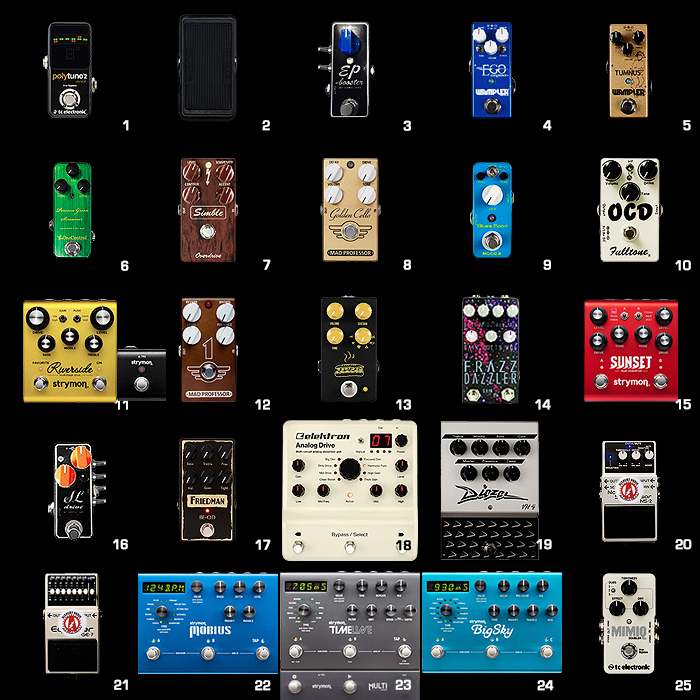
I've not really been doing this pedal malarkey for too long - around a year and a half or so, but boy have I learned at lot in that time. When I started out on this journey I was aiming to keep it as simple as possible with ideally just a guitar and some sort of modelling amp - which could give me all the tones, textures and effects I needed. Yet none of those amps were truly satisfactory. And nothing for me can compete with the sheer joy and exhilaration of stomping on different pedal combinations in turn - instantly and effortlessly - to create wonderfully complex and dynamic grooves.
In my first pedalboard article I had an arrangement of 12, next the number was up to 14 - and I actually did get 11 of all those intended. From the first official pedal chain of 25, there are 12 of those originals that are still featured in the current chain, so 13 have been replaced and 11 more added. The most significant incumbents being Mad Professor and Strymon - who have lost 3 pedals each from the chain.
The Biggest winners have been Boss, Dr Scientist and Empress who each have seen 3 new pedals in the chain - note that the Dr Scientist BitQuest is pretty regularly swapped around with the DigiTech Dirty Robot in the number [7] slot. I also have 3 Foxpedals in regular use now too - with the Wrath V2 frequently appearing as a swap out for the Frazz Dazzler in position [19].
The Next Phase (III)
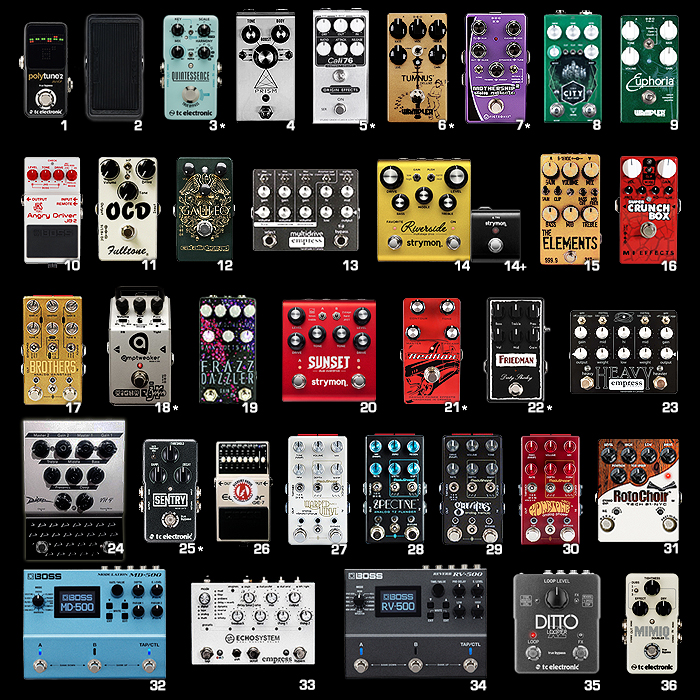
There seems to have been a somewhat unintentional migration away from mini pedals in the chain, but most of the new additions are more rotating swap-outs really rather than out-an-out replacements.
I already have plans for the following 10 per the above picture - note relevant slots are asterisked in the visual:
[slot number]
[3] TC Electronic Quintessence Harmonizer - £145 :
I reckon this will end up spending more time in the chain than the Sub 'N' Up - it does more, and with the 3 TonePrints available you can replicate 1 or 2 essential Octaver effects too! Note however that the Quintessence is Monophonic (individual notes), while the Sub 'N' Up is fully Polyphonic (several notes at a time / strum) - so you really need both.
[5] Origin Effects Cali76 Compact Deluxe - £279 :
I feel this is currently the go-to industry standard for pro players - everyone seems to love it, and it's made locally here in the UK. I'm not 100% decided that I need to switch up from my Mini Ego, but if I do - then this is 100% the most likely result.
[6] Wampler Tumnus Deluxe - £199 :
It's a very obvious choice really to update / upgrade my best loved and most used Overdrive - I'm glad I've left it a while too, as there were production issues with the early editions. Note that this is more often the case than you would like to think - it does not always pay to be the first mover, as you will on occasion have to return your unit for updates.
[7] Pigtronix Mothership 2 - £249 :
This one really is a marvel of engineering - featuring dual toggle-switch controls and no less than 10 dials - arranged in 5 dual-concentric stacks. It replaces the previous original Mothership pedal with one which is less than 1/3 of the real-estate. I wish Carl Martin and EHX in particular would take note, as they create some truly fine pedals - but a lot of them are housed in rather old-fashioned, over-sized enclosures.
[18] Amptweaker Tight Fuzz Jr - £169 :
The holy grail for fuzz would be to have one of those Spaceman Gemini III mixable Germanium / Silicon fuzzes, but as they are now discontinued and second-hand ones are rare (and sell for the best part of a grand). Then the recent Germanium + Silicon compact Amptweaker is the next best thing. The one thing it cannot do unlike the Gemini III is mix the outputs of the Germanium and Silicon together - it's a choice of one or the other.
[21] Dawner Prince RedRox Distortion - £179 :
This isn't really a like-for like swapout, as I'm not sure it can fully do the Super Bass thing of the SL Drive, but it does have a Contour dial - so there is some room to manoeuvre - as a crunchy distortion though it does sound wonderful. Will likely be on fairly regular rotation with the SL Drive in that same slot.
[22] Friedman Dirty Shirley - £199 :
Another rotation pedal for swapping out with the BE-OD - this one has more mid-range and slightly more width and warmth, while the BE-OD is tighter and more percussive.
[24] MI Audio Megalith Delta Distortion - £217 :
I really love the updated Diezel VH4-2 and it's a recent addition, so I'm not looking to replace its pride of position any time soon, but I equally love the MI Audio pedals - i.e. the existing Super Crunch Box, and the Megalith sounds pretty spectacular too - so I think it would be a decent occasional swap-out for the Diezel - a sort of understudy if you will
[25] TC Electronic Sentry - £127 :
By and large I'm very happy with my Alchemy Audio Boss NS-2, but it does cause me consternation on occasion - especially when I really ramp up the gain on some of my pedals. The TC Electronic benefits from more tunable frequency controls - as well as of course the genius of TonePrint presets. TCE could go one better an give you the option to footswitch between a couple of presets, but in my opinion this is currently the best noise gate on the market - I've no idea how I overlooked it previously, but I somehow just automatically gravitated towards the Boss!
[XXA] Zvex Fuzzolo Mini - £109 :
This could be swapped out of a number of slots temporarily, this mini fuzz box sits most naturally in slot [18] - but depending on what I want to achieve, I could drop it at positions [11] and [12] too, in fact [7] even.
[XXB] Zvex Vertical Fuzz Factory - £199 :
I'm determined to get a Zvex Fuzz pedal pretty soon - and it must be a vertical enclosure - which currently leaves the selection at the new Vertical Fuzz Factory or the Mini Fuzzolo. The latter I would probably get anyhow, but ideally I would really want a Fat Fuzz Factory - but that is not available yet. There's another stalking horse too though in the shape of the Side Effects Woolly Mammoth 7 Clone - which runs to about £150 - so I definitely want one of those edgy / gated / velcro fuzzes - in fact Old Blood Noise Endeavours Haunt at £179 also springs to mind...
Note that I've also written a companion pieces to this article called 'Pedal Directory...' - which lists all the pedals mentioned in this article, but per brand and with a few extras thrown in that I like the look of. That article was deliberately added first - so that it would appear after this one in the Blog listing. They will both go live at the same time!








